
* The views expressed herein are those of the authors and should not be reported as or
attributed to the International Monetary Fund, its Executive Board, or the governments
of any of its member countries.
Gulf Cooperation Council
Trade and Foreign Investment—Keys to Diversification and Growth
in the GCC
Prepared by Staff of the International Monetary Fund
I N T E R N A T I O N A L M O N E T A R Y F U N D

TRADE AND FOREIGN INVESTMENT
2 INTERNATIONAL MONETARY FUND
CONTENTS
EXECUTIVE SUMMARY __________________________________________________________________________ 3
A. Introduction ___________________________________________________________________________________ 4
B. Recent Trends in Foreign Trade and Investment _______________________________________________ 4
C. Foreign Trade and Investment Environment __________________________________________________ 12
D. Growth Impact of Enhanced Foreign Trade and investment __________________________________ 21
E. Concluding Remarks __________________________________________________________________________ 28
BOXES
1. Tapping Greater FDI Inflows: The Case of Singapore __________________________________________ 18
2. Boosting Intra-GCC Non-Oil Trade ____________________________________________________________ 23
FIGURES
1. Trade and FDI __________________________________________________________________________________ 5
2. Trade Openness ________________________________________________________________________________ 5
3. Composition of GCC Export of Goods, 2016 ___________________________________________________ 7
4. Quality and Concentration of Exported Goods _________________________________________________ 8
5. Product Complexity of Exports _________________________________________________________________ 9
6. Intra-GCC Trade in Goods, 2012–16 ____________________________________________________________ 9
7. Trade in Services, 2000–17 ____________________________________________________________________ 10
8. Trade in Services by Type _____________________________________________________________________ 10
9. FDI Flows ______________________________________________________________________________________ 11
10. Foreign Direct Investment ___________________________________________________________________ 11
11. Evolution of the GCC Supra-National Trade and Investment Policies ________________________ 12
12. Direct and Indirect Trade and FDI Barriers ___________________________________________________ 14
13. Average Public Procurement Indicators, 2017 ________________________________________________ 19
14. Logistics Performance Index, 2018 ___________________________________________________________ 20
15. Potential and Actual Exports _________________________________________________________________ 22
16. Export Diversification and Sophistication ____________________________________________________ 22
17. Average Monthly Earnings ___________________________________________________________________ 24
18. Human Capital _______________________________________________________________________________ 25
19. Non-Tradable Services and Export Gaps, 2015 _______________________________________________ 25
20. Trade Barriers and Business Climate _________________________________________________________ 26
21. FDI Inflows ___________________________________________________________________________________ 27
TABLE
1. Enabling Trade Index and Subcomponents, 2016 _____________________________________________ 15
APPENDICES
I. Export Indices __________________________________________________________________________________ 30
II. Regression Analysis ___________________________________________________________________________ 32
References _______________________________________________________________________________________ 39

TRADE AND FOREIGN INVESTMENT
INTERNATIONAL MONETARY FUND 3
EXECUTIVE SUMMARY
1
Diversification of the GCC economies, supported by greater openness to trade and higher
foreign investment, can have a large impact on growth. Such measures can support higher,
sustained, and more inclusive growth by improving the allocation of resources across sectors and
producers, creating jobs, triggering technology spillovers, promoting knowledge, creating a more
competitive business environment, and enhancing productivity.
The GCC countries are open to trade, but much less so to foreign direct investment (FDI).
GCC foreign trade has been expanding robustly, but FDI inflows have stalled in recent years
despite policy efforts taken to reduce administrative barriers and provide incentives to attract
FDI. Tariffs are relatively low; however, a number of non-tariff barriers to trade persist and there
are substantial restrictions on foreign ownership of businesses and real estate.
The growth impact of closing export and FDI gaps could be significant. In most countries,
the biggest boost to growth would come from closing the FDI gap—up to one percentage point
increase in real non-oil per capita GDP growth. Closing export gaps could provide an additional
growth dividend in the range of 0.2-0.5 percentage point.
Boosting non-oil exports and attracting more FDI requires a supportive policy
environment. Policy priorities are to upgrade human capital, increase productivity and
competitiveness, improve the business climate, and reduce remaining barriers to foreign trade
and investment. Specifically, continued reforms in the following areas will be important:
• Human capital development: continue with investments made to raise educational quality to
provide knowledge and skills upgrade.
• Labor market reforms: aim to improve productivity and boost competitiveness of the non-oil
economy.
• Legal frameworks: ensure predictability and protection; efforts should include enhancing
minority investor protection and dispute resolution; implementing anti-bribery and integrity
measures.
• Business climate reforms: focus on further liberalizing foreign ownership regulations and
strengthening corporate governance; and on further reducing non-tariff trade barriers by
streamlining and automating border procedures and streamlining administrative processes
for issuing permits.
1
Prepared by a team led by Vahram Stepanyan, comprising Botir Baltabaev, Anastasia Guscina, Mohammed
Zaher, Ling Zhu, and Tucker Stone, under the supervision of Bikas Joshi (all MCD). Diana Kargbo-Sical provided
editorial support.

TRADE AND FOREIGN INVESTMENT
4 INTERNATIONAL MONETARY FUND
A. Introduction
1. Most countries in the Gulf Cooperation Council (GCC) have made limited progress
in diversifying their economies away from hydrocarbons.
2
On average for the region during
2000-2017, oil revenues were close to 80 percent of government revenues, oil exports amounted
to 65 percent of total exports, and oil GDP represented 42 percent of total GDP.
3
This picture was
broadly unchanged during 2011–17. There is a need to diversify the economies of the GCC to
reduce exposure to volatility and uncertainty in the global oil market, help create private sector
jobs, and increase productivity and sustainable growth (Callen et al., 2014).
2. Higher foreign trade and investment can play a large role in boosting
diversification and growth. Several studies link greater trade openness to higher per capita
income (Frankel and Romer, 1999; Feyrer, 2009; Cerdeiro and Komaromi, 2017), while FDI can
boost growth by triggering technology spillovers, promoting knowledge, creating a more
competitive business environment, and enhancing productivity (OECD, 2002; WEF, 2013). Further
reducing barriers to foreign trade and investment to broaden and upgrade their export bases can
help GCC countries better integrate into global value chains and make their economies more
productive (IMF, 2017b).
3. This paper helps identify policy reform priorities to support diversification and
growth in the GCC through exports and foreign investment. The paper is organized as
follows: Section B outlines recent trends in foreign trade and foreign direct investment (FDI) in
the GCC; Section C discusses the evolution of policy frameworks and business environment for
foreign trade and FDI; Section D analyses export and FDI determinants and provides estimates of
the GCC economies’ potential exports and FDI inflows as well as growth impact from boost to
exports and FDI; Section E concludes with policy priorities.
B. Recent Trends in Foreign Trade and Investment
The GCC economies’ foreign trade has expanded robustly, but export quality and diversification
remain relatively low. Meanwhile, FDI inflows into the GCC have been concentrated in a limited
number of countries and sectors and have weakened in recent years.
4. While trade between the GCC and the rest of the world has expanded robustly, FDI
inflows into the region have stalled in recent years. Since 2000, the GCC’s trade in goods and
services grew at an average real rate of 7.5 percent, almost twice that of real GDP growth,
compared with the global averages of 4.8 percent and 3.8 percent, respectively. The oil price
boom during 2003-2008 led to a sharp increase in oil export receipts which in turn led to a
significant expansion in imports of goods and services during that period. This growth in trade
was interrupted during the global financial crisis, but has rebounded strongly since then, largely
2
In this paper “hydrocarbon” is used interchangeably with “oil”.
3
Recently, countries have been implementing policies to increase non-oil fiscal revenues. In particular, Saudi
Arabia and UAE introduced a value-added tax in 2018.
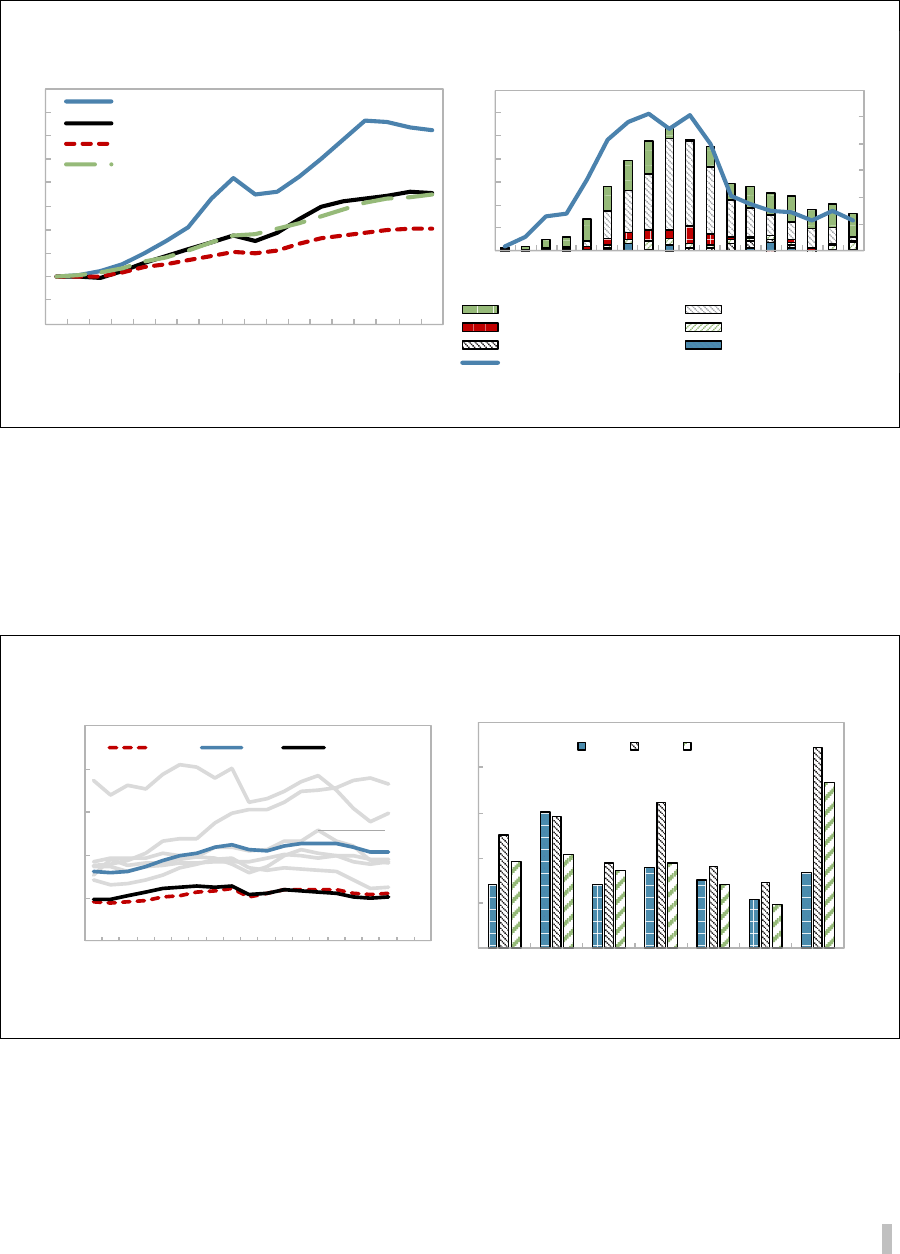
TRADE AND FOREIGN INVESTMENT
INTERNATIONAL MONETARY FUND 5
driven by solid domestic demand and improvements in global conditions. On the other hand,
after surging in the early 2000s, FDI inflows into GCC countries have stalled, remaining on
average below 2 percent of regional GDP (Figure 1).
Figure 1. GCC: Trade and FDI
5. The GCC countries are highly engaged in trade. The ratio of exports and imports of
goods and services to GDP exceeded 100 percent in 2017, well above the average of 50 percent
for emerging economies (Figure 2). This largely stems from the region’s large hydrocarbon
resources, mostly exported, and a lack of diversification in domestic production, necessitating
imports.
Figure 2. GCC: Trade Openness
BHR
OMN
QAT
SAU
UAE
KWT
0
50
100
150
200
250
2000
2001
2002
2003
2004
2005
2006
2007
2008
2009
2010
2011
2012
2013
2014
2015
2016
2017
World GCC EMs
GCC Trade Openess, 2000-2017
(Su m of exports an d imports as percent of GDP)
Sou rces: World Economic Outlook; and IMF staff calculations.
0
50
100
150
200
250
GCC BHR KWT OMN QAT SAU UAE
2000 2012 2017
GCC Trade Openess, 2000-2017
(Sum of non-oil exports and total imports as percent of non
-oil G DP)
0
50
100
150
200
250
300
350
400
450
500
2000
2001
2002
2003
2004
2005
2006
2007
2008
2009
2010
2011
2012
2013
2014
2015
2016
2017
Real imports of goods and services
Real exports of goods and services
Real GDP
Real non-oil GDP
GCC Real Trade of Goods and Services and GDP, 2000-17
(Index, 2000=100)
Sources: World Economic Outlook; Country authorities; and IMF staff calculations.
0
1
2
3
4
5
6
0
10
20
30
40
50
60
70
2000
2001
2002
2003
2004
2005
2006
2007
2008
2009
2010
2011
2012
2013
2014
2015
2016
2017
GCC FDI Inflows, 2000
-2017
(In USD billion)
UAE Saudi Arabia
Qatar Oman
Kuwait Bahrain
GCC (Percent of GDP, RHS)

TRADE AND FOREIGN INVESTMENT
6 INTERNATIONAL MONETARY FUND
Trade in goods
6. The GCC countries are predominantly exporters of hydrocarbons. With some of the
world’s largest hydrocarbon reserves, most GCC countries (except the UAE and Bahrain) have the
bulk of their total exports concentrated in oil and gas, with the share of the latter ranging
between 70 to 80 percent in Kuwait, Qatar, and Saudi Arabia (Figure 3).
7. Non-hydrocarbon exports have increased, with some transition from raw materials
to intermediate goods. Non-oil exports (including re-exports) have increased, from 16 percent
of non-oil GDP in 2000 to 32 percent in 2017, though they remain a small share of global non-oil
trade. This robust growth has been concentrated in capital-intensive downstream industries—
petrochemicals, refined hydrocarbons, aluminum—that directly capitalize on the region’s
competitive advantage in abundant hydrocarbons and subsidized energy. The share of exported
raw materials accordingly has been declining in favor of intermediate and consumer goods. Re-
exports of goods make a non-negligible share in total GCC exports of goods and services (about
a fifth), primarily explained by their very high share in the UAE exports; however, this paper does
not focus on this aspect of foreign trade as it strives to assess the export potential from the
perspective of creating substantial value added for the GCC economies.
8. The GCC is establishing itself as a significant supplier of petrochemicals, aluminum,
and some minerals. SABIC of Saudi Arabia, for example, is one of the world’s largest
petrochemicals manufacturers while ALBA of Bahrain is among the largest aluminum smelters in
the world. Oman has become the world’s largest exporter of gypsum in 2017. The region
continues to maintain a revealed comparative advantage (RCA) (for definition, see Appendix I) in
primary commodities, including fuel, metals and minerals. In 2016, the number of products with
RCA ranged between 31 in Qatar and 172 in the UAE. The sectoral distribution of exports also
shows that Saudi Arabia has RCA in plastic and rubber exports, Bahrain, Oman and UAE in metals
and minerals, and UAE in stone and glass. Other non-oil exports are small and scattered among
various categories. Meanwhile, GCC countries have achieved less success in exporting other
manufactured goods, reflecting relatively small direct involvement in the global value chains.
9. The value-added and diversification of non-oil exports remain relatively low. Export
quality, a proxy for value-added, (for definition, see Appendix I) has increased in all GCC
countries over the last 15 years, though at varying degrees, but generally remains low compared
to emerging market averages (Figure 4). During the same period, most GCC economies saw
limited reduction in export concentration indices (with the exception of the UAE and Oman) and
when compared to other emerging markets, GCC’s overall non-oil exports appear more
concentrated.
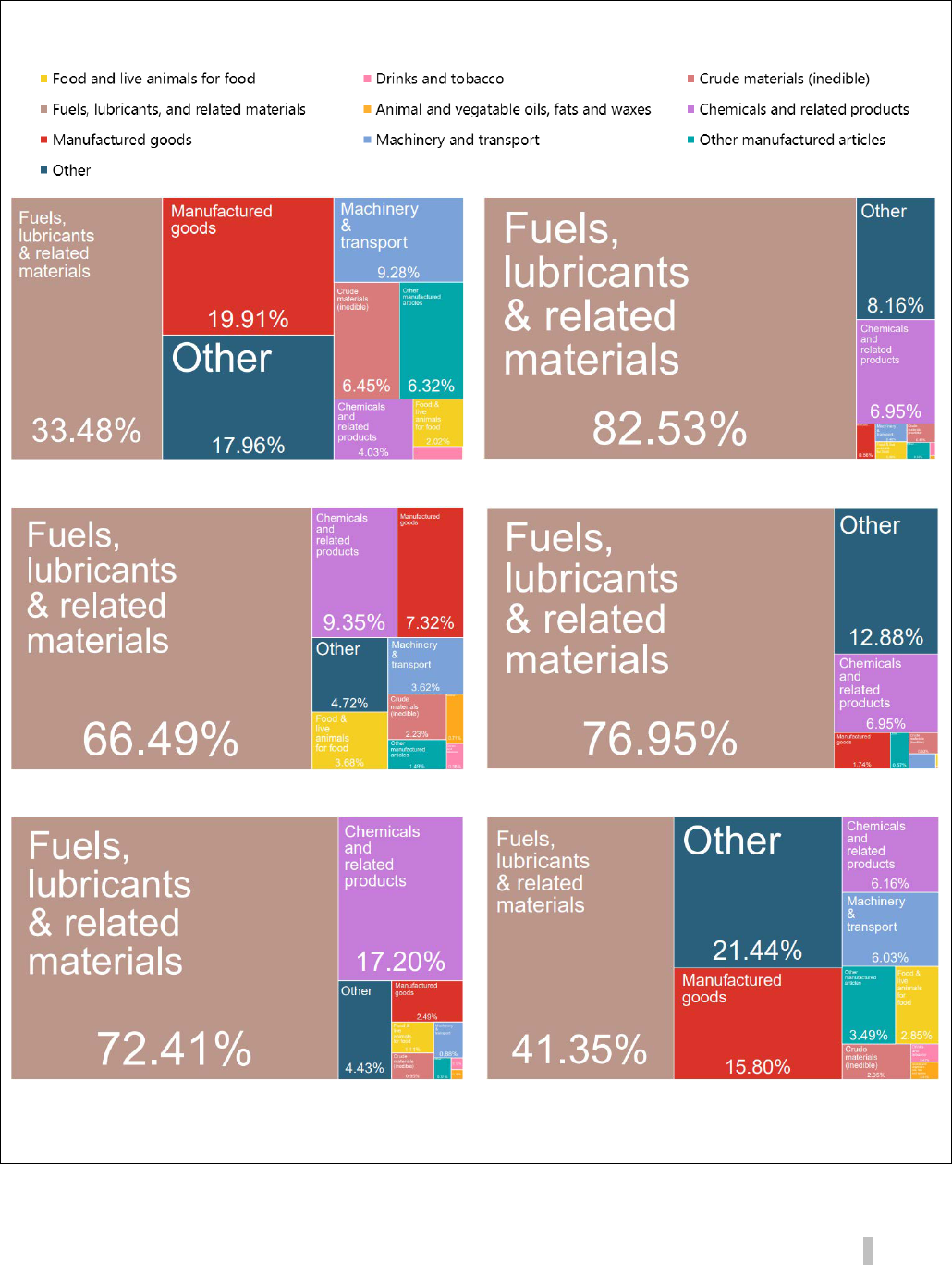
TRADE AND FOREIGN INVESTMENT
INTERNATIONAL MONETARY FUND 7
Figure 3. Composition of GCC Export of Goods, 2016 1/
Bahrain
Kuwait
Oman
Qatar
Saudi Arabia
United Arab Emirates
________________________
Sources: Atlas of Economic Complexity; and UN COMTRADE.
1/ Data according to Standard International Trade Classification (SITC1).
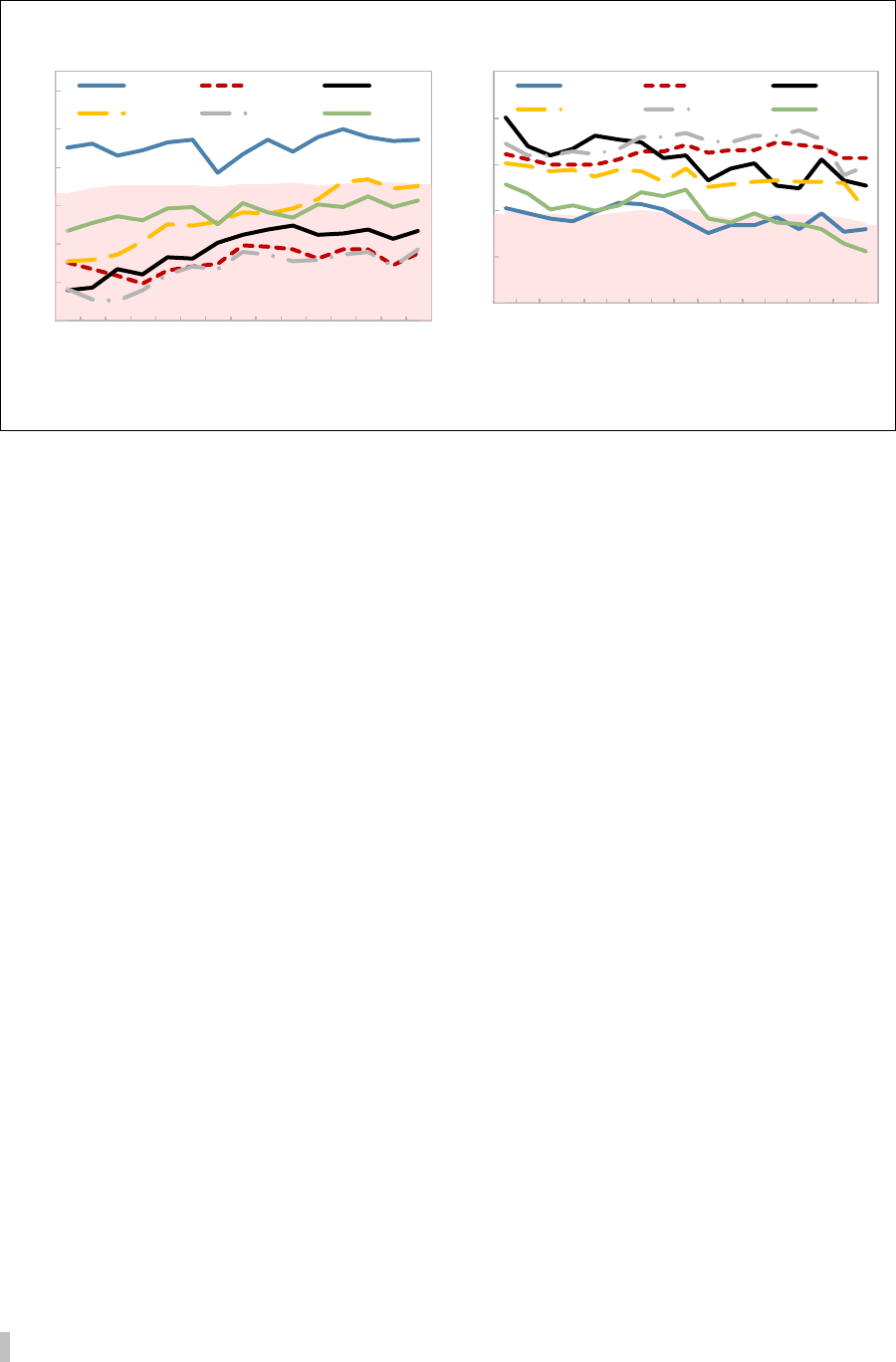
TRADE AND FOREIGN INVESTMENT
8 INTERNATIONAL MONETARY FUND
Figure 4. GCC: Quality and Concentration of Exported Goods
10. The GCC lags other regions in export sophistication. The export product complexity
index (for definition, see Appendix I), which looks at the share of knowledge-intensive products
in the export basket, shows the level of sophistication of a country’s goods exports which is
found to be associated with higher income levels (Henn et al., 2013). The least complex products
(lowest quintile) accounted for more than 90 percent of the value of exports in 2013, the latest
year for which data is available, in contrast to emerging economies in Latin America and Asia,
and the share of the most complex products (top quintile) in the GCC was close to zero
(Figure 5).
11. The large hydrocarbon endowments as well as low diversification and
sophistication of exports could partly explain the limited integration of the GCC into
global value chains (GVCs). While the UAE has made more headway than others in diversifying
its economy, evidence shows that in most GCC economies indicators of economic complexity,
diversity, and export quality are lower when compared to many emerging market economies,
including other oil producers and countries in the region. Like in many other emerging market
commodity-exporters, the GCC exports, dominated by hydrocarbons, largely participate in the
early stages of GVCs while a limited participation in the final stages of GVCs means a relatively
small share of foreign value added in the GCC exports. Other impediments to greater integration
into global value chains are discussed in Section III.
Sources: IMF, Export Diversification and Quality Dataset;
national authorities.
0.5
0.6
0.7
0.8
0.9
1.0
1.1
2000
2001
2002
2003
2004
2005
2006
2007
2008
2009
2010
2011
2012
2013
2014
Bahrain
Kuwait Oman
Qatar
SAU UAE
Shaded area is EM average
Export Quality, 2000–14
0.0
0.2
0.4
0.6
0.8
1.0
2000
2001
2002
2003
2004
2005
2006
2007
2008
2009
2010
2011
2012
2013
2014
2015
2016
Bahrain Kuwait Oman
Qatar SAU UAE
Shaded area is EM average
So u rces: UNCTAD.
1/ Lower index indicates
lower concentration and higher
diversification.
GCC Export Concentration Index, 2000–16 1/
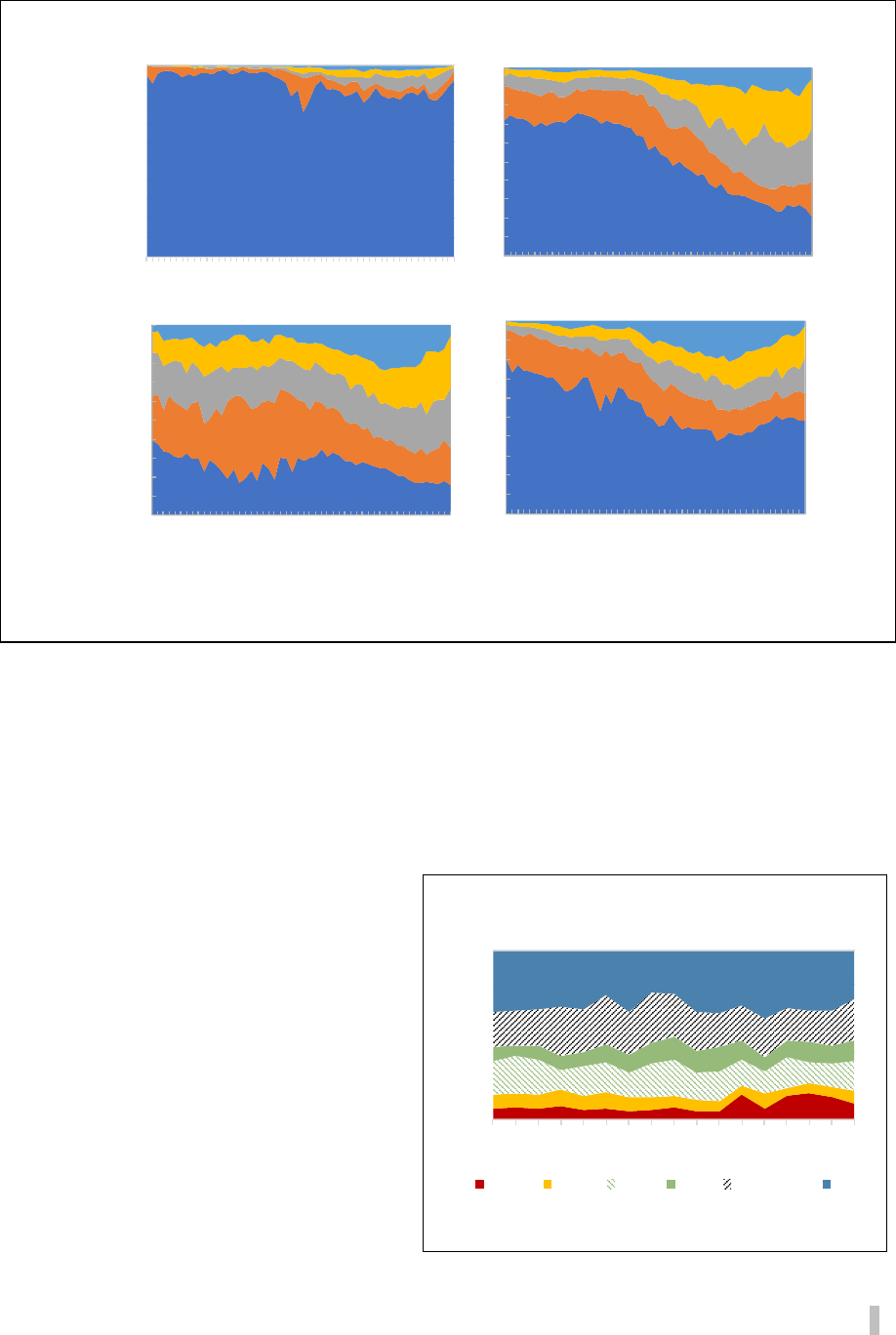
TRADE AND FOREIGN INVESTMENT
INTERNATIONAL MONETARY FUND 9
Figure 5. GCC: Product Complexity of Exports 1/
12. The GCC economies’ imports far exceed their non-oil exports. The GCC countries
remain heavily dependent on imports to meet their consumption and investment needs.
Machinery and transport equipment (34 percent of total) comprise GCC’s main imports followed
by manufactured goods and articles (24 percent) and food (9 percent). With imports consistently
exceeding non-oil exports, GCC countries’ non-oil trade balance has been in constant deficit
(about 11 percent of non-oil GDP in 2017).
13. Intra-GCC trade in goods remains
modest. Notwithstanding the low trade
barriers under the GCC common market
agreement since 2008, intra-GCC non-oil
trade remains low, at only 10 percent of
total non-oil trade in 2016. This suggests
that complementarities within the region
are weak, most probably due to similar
economic structures and levels of economic
development. Out of the $85 billion intra
GCC trade in 2016, the UAE accounts for
the largest share, highlighting its role as a
major re-exporting hub, followed by Saudi
Arabia and Oman (Figure 6).
Figure 6. Intra-GCC Trade in Goods, 2000–16
(Country share, percent)
0%
20%
40%
60%
80%
100%
2000
2001
2002
2003
2004
2005
2006
2007
2008
2009
2010
2011
2012
2013
2014
2015
2016
Bahrain Kuwait Oman Qatar Saudi Arabia UAE
Sources: UN Comtrade; and IMF staff calculations.
0%
10%
20%
30%
40%
50%
60%
70%
80%
90%
100%
1962
1965
1968
1971
1974
1977
1980
1983
1986
1989
1992
1995
1998
2001
2004
2007
2010
2013
Latin America and Caribbean
0%
10%
20%
30%
40%
50%
60%
70%
80%
90%
100%
1962
1965
1968
1971
1974
1977
1980
1983
1986
1989
1992
1995
1998
2001
2004
2007
2010
2013
Emerging Asia
0%
10%
20%
30%
40%
50%
60%
70%
80%
90%
100%
1962
1965
1968
1971
1974
1977
1980
1983
1986
1989
1992
1995
1998
2001
2004
2007
2010
2013
Emerging Europe
0%
10%
20%
30%
40%
50%
60%
70%
80%
90%
100%
1962
1965
1968
1971
1974
1977
1980
1983
1986
1989
1992
1995
1998
2001
2004
2007
2010
2013
GCC
Sou rce: Ding, Xiao dan an d Metodij Hadzi-Vaskov, 2017, "Composition of Trade in Latin America and the Cari bbean, " IMF W ork ing Pap er
No. 17/42 (Washington: International Monetary Fund).
1/ This chart shows the distribution of exports for different regions according to the level of product complexity: top area corre
sponds to
the share of exports that belong to the top (fifth) quintile in terms of product complexity index (PCI), and the bottom area corresponds
to the share of products int he bottom quintile of the distribution of the produc complexity index (PCI).

TRADE AND FOREIGN INVESTMENT
10 INTERNATIONAL MONETARY FUND
Trade in services
14. Services play an increasingly
important role in the GCC’s trade. The
share of service exports has increased
from around 5 percent of non-oil GDP in
2000 to 12 percent in 2017, while the
share of service imports has increased at a
slower pace, from 20 to 23 percent of
non-oil GDP, during the same period
(Figure 7).
15. Tourism and transportation
services make the bulk of the GCC’s
trade in services. Tourism remains one of the region’s fastest-growing sectors. In 2016, the
GCC’s exports of tourism were approximately half of total services exported. The UAE and Saudi
Arabia account for more than 75 percent of travel receipts, given their leading positions as
leisure and religious tourism destinations, respectively. Transportation is the second largest
traded service in the region with a share of 35 percent. A similar pattern holds for GCC imports of
services—travel dominates services imports followed by transportation (Figure 8).
Figure 8. GCC: Trade in Services by Type
Foreign Direct Investment
16. FDI inflows have weakened in recent years (Figure 9). While reforms have been
implemented to attract foreign investment, these have taken place against the backdrop of the
lingering effect of the global financial crisis and rising uncertainties and geopolitical tensions in
the Middle East region. Even though the GCC countries are capital-rich, attracting FDI can bring
access to foreign markets, better management practices and technical know-how to the
domestic economy, thus enhancing work force skills and increasing productivity (World Bank,
2013).
Figure 7. GCC: Trade in Services, 2000–17
(In percent of non-oil GDP)
0%
20%
40%
60%
80%
100%
GCC BHR KWT OMN QAT SAU UAE
Transportation Tra vel Other
GCC Exports of Services
(In percent of total, latest data available)
Sources: UN Comtrade; and IMF staff calculations.
0%
20%
40%
60%
80%
100%
GCC BHR KWT OMN QAT SAU UAE
Transportation Tra vel Other
GCC Imports of Services
(In percent of total, latest data available)
0
5
10
15
20
25
30
2000
2001
2002
2003
2004
2005
2006
2007
2008
2009
2010
2011
2012
2013
2014
2015
2016
2017
Exports
Impo rts
Sources: W orld Economic O utlook; and IMF staff calculations.
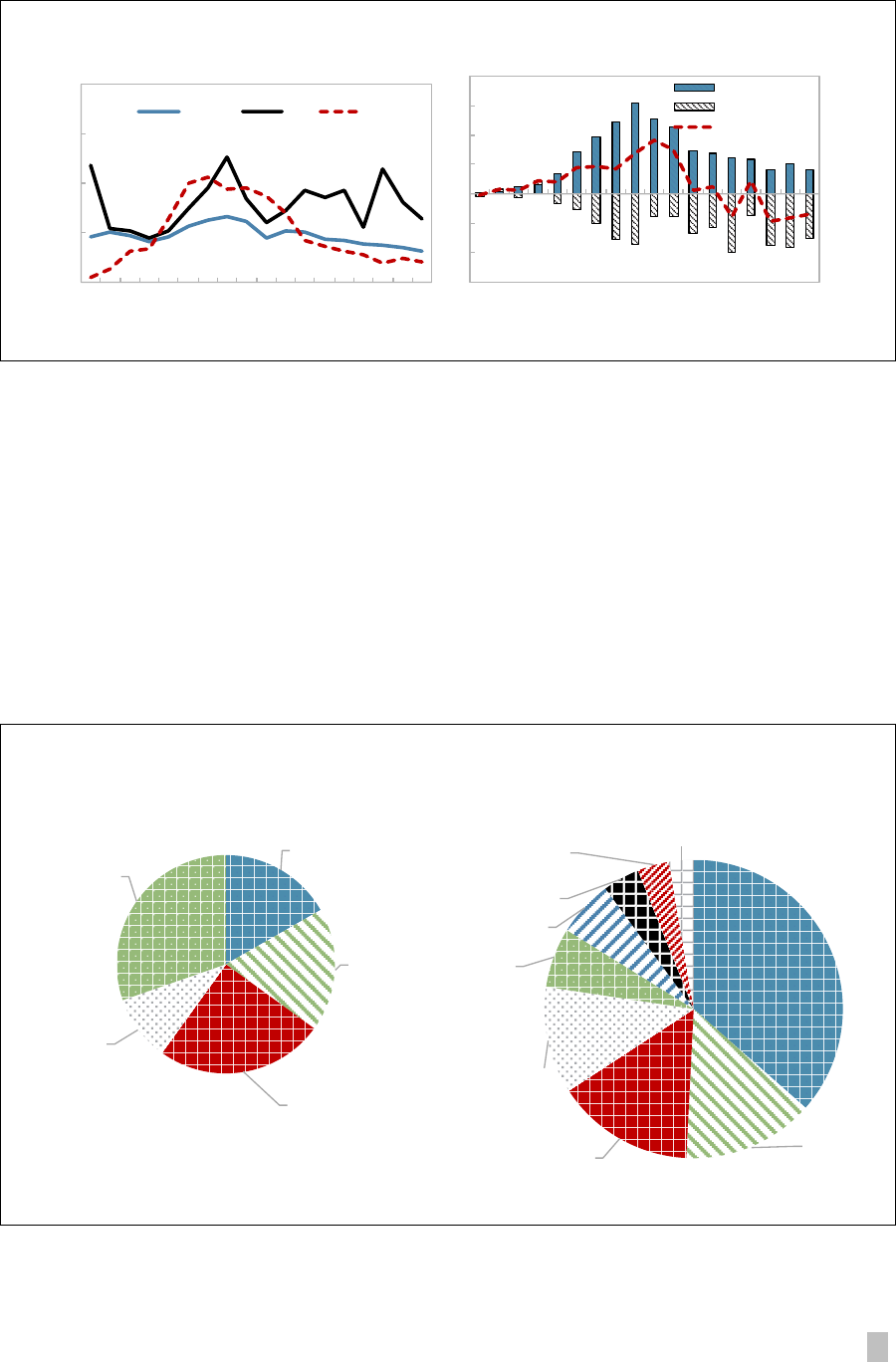
TRADE AND FOREIGN INVESTMENT
INTERNATIONAL MONETARY FUND 11
Figure 9. GCC: FDI Flows
17. FDI inflows into the region have been skewed toward specific sectors and
concentrated in two GCC countries. FDI inflows have largely financed green field investments
with 60 percent of the inflows concentrated in three sectors — real estate, petroleum, and
chemicals (Figure 10). Reflecting their size, Saudi Arabia and the UAE have attracted almost
80 percent of total FDI inflows.
18. While the sources of FDI are diversified in terms of geography, a few countries
account for most of it. The US and India have been the origin of more than a quarter of FDI
inflows in recent years, while the UAE represents a sizable portion of FDI inflows into other GCC
countries (Figure 11). During 2003–16, intra-GCC FDI flows have been concentrated in the real
estate, hydrocarbon and tourism sectors.
Figure 10. GCC: Foreign Direct Investment
Petroleum
16.7
Chemicals
18.3
Real estate
25.0
Tou rism 9.7
Other 30.3
GCC: Cumulative FDI Flows by Sector, 2012-2016
(Percent of total)
Sou rce: Arab Investment and Export Credit Guarantee
Corporation, 2017; and IMF staff calculations.
Other
36.5
UAE 14.3
USA 15.0
India 11.6
UK6.5
France 6.1
Sin g apo re 4.0
China 3.4
Saudi Arabia2.7
Sou rce: Arab Investment and Export Credit Guarantee
Corporation, 2017; and IMF staff calculations.
GCC: Cumulative FDI Flows by Source, 2012-2016
(Percent of total)
0
10
20
30
40
2000
2001
2002
2003
2004
2005
2006
2007
2008
2009
2010
2011
2012
2013
2014
2015
2016
2017
EMDCs
AE GCC
FDI Inflows, 2000-17
(In percent of GDP)
Sources: Country authorities; and IMF staff
calculations.
-60
-40
-20
0
20
40
60
80
2000
2001
2002
2003
2004
2005
2006
2007
2008
2009
2010
2011
2012
2013
2014
2015
2016
2017
FDI Inflows
FDI Outflows
Ne t FDI flo ws
GCC FDI Flows, 2000-17
(In USD billion)
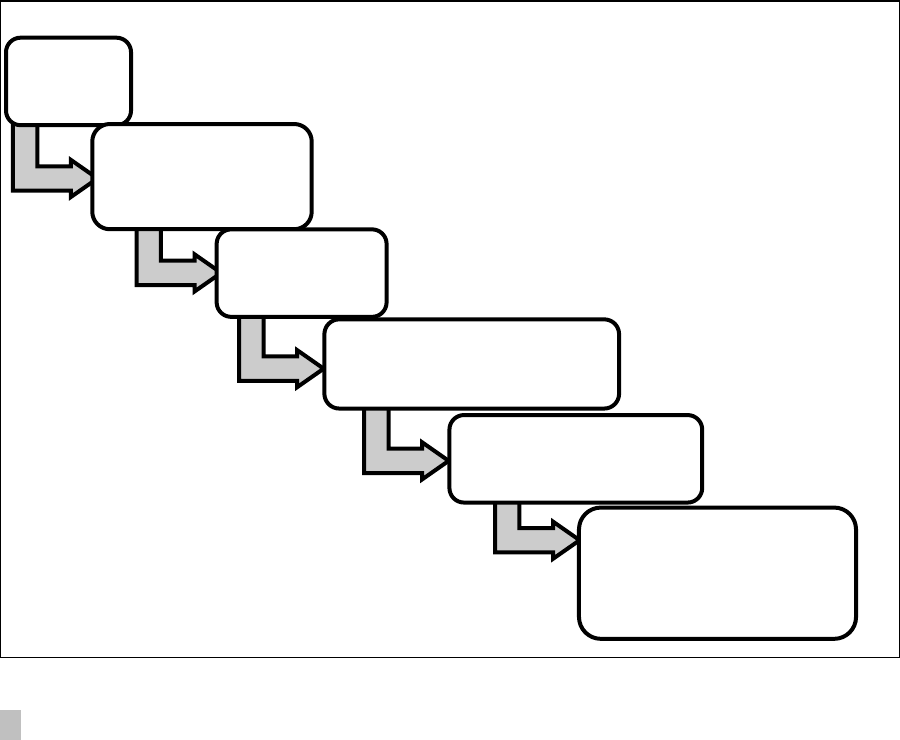
TRADE AND FOREIGN INVESTMENT
12 INTERNATIONAL MONETARY FUND
C. Foreign Trade and Investment Environment
The GCC countries have made strides in improving the foreign trade and investment environment
including through regional integration and harmonization. While geopolitical tensions and global
weakening of FDI flows to emerging markets are creating headwinds, further reducing non-tariff
barriers and regulatory restrictions on FDI would help boost trade and foreign investment.
19. There is substantial scope to increase non-oil exports and boost FDI inflows. While
trade openness is relatively high, the value-added and diversification of exports remain relatively
low; likewise, FDI inflows to the region have underperformed other emerging markets and
remain concentrated in a few sectors. This section examines policy and institutional frameworks
that might have contributed to these outcomes.
Current State of Regional Collaborative Arrangements
20. Founded in 1981, the GCC has provided the basis to promote economic cooperation
and integration within the region. Over the course of almost three decades, it has gradually
evolved into an increasingly integrated economic bloc with harmonized legal and economic
systems and coordinated external commercial policies and trade relations (Figure 11). The
founding of the GCC Customs Union in 2003 was meant to encourage free trade, and the GCC
common market in 2008 was a step further to promote cross-national labor and capital mobility.
Figure 11. Evolution of the GCC Supra-National Trade and Investment Policies
1981
GCC
established
1983
exemptions of most domestic
products from customs duties
simplified customs and travel
procedures among GCC states
1990
retail and wholesale
trade opened to any
GCC national
2003
Customs Union Agreement
removal of restrictions on internal trade
establishing common external tariffs
2008
GCC Common Market
labor market mobility
unrestricted rights of ownership and
property, capital mobility
similar tax treatment
2005
Agreement to coordinate all
external trade negotiations through
the GCC Secretariat

TRADE AND FOREIGN INVESTMENT
INTERNATIONAL MONETARY FUND 13
21. All GCC countries are members of the WTO and are part of other regional
agreements. Saudi Arabia was the last GCC member to join the WTO in 2005. The GCC countries
are active members of Pan-Arab Free Trade Area (PAFTA), which was established in 1997 under
the auspices of the Arab League. Furthermore, a number of bilateral and collective free trade
agreements are in force and several more are being negotiated. In 2008, the GCC signed a free
trade agreement with Singapore, which went into effect in 2013. All GCC countries have
preferential trade agreements with Kazakhstan, Russia, Turkey, and Australia. In addition, Bahrain,
Oman, and Saudi Arabia have bilateral agreements with a number of other countries. In 2005, the
GCC countries agreed to coordinate all external trade negotiations through the GCC Secretariat.
In general, collective trade agreements in the GCC have advanced very slowly, partly reflecting
difficulty of adhering to common interests.
Trade and Investment Policy Indicators and Impediments
22. Intra-regional trade barriers are very low, apart from those related to the
diplomatic rift last year. As of June 2017, tariff barriers were non-existent and nontariff trade
barriers between GCC countries had been progressively lowered. GCC nationals could freely
participate in business activities related to retail and wholesale trade, recruitment offices, car
rental, and most cultural activities. Restrictions on stock ownership and property possession by
GCC citizens had also been reduced. The GCC countries had adopted unified GCC technical
standards, and harmonized and reduced customs administrative procedures and clearance
requirements. The remaining indirect trade barriers included preferential policies and practices
related to public procurement, subsidies to domestic producers, and customs border controls.
23. The GCC’s external tariffs are relatively low (Figure 12). The Customs Union
Agreement, signed in 2003, established a common GCC external tariff of 5 percent on most
imported merchandise and of zero percent on essential goods (roughly a fifth of total imports).
The average Most Favored Nation applied tariff rate dropped from 8.2 percent in 2000–04 to
5.9 percent in 2006–09 and to about 4 percent in 2016.
24. Prevalence of non-tariff barriers varies widely within the GCC region (Figure 12 and
Table 1). According to the World Economic Forum’s (WEF) 2017 Global Competitiveness Index,
the UAE ranks among the least restrictive countries in terms of non-tariff trade barriers, while
Kuwait ranks among the most restrictive. Likewise, the OECD’s Trade Facilitation Indicators
Database ranks the UAE as a top performer in trade facilitation. The WEF’s Global Enabling
Trade Report, which ranks 136 countries in terms of market access, border administration,
infrastructure, and operating environment, points to a wide heterogeneity among GCC countries
in creating an enabling environment for trade: the UAE ranks in the top 25
th
percentile across
most dimensions and Kuwait ranks in the bottom 25
th
percentile (Table 1). Some constraints are
common throughout the GCC—time and cost (both documentary and border compliance) to
import and export.
4
GCC countries are reviewing their regulations with a view to ease them.
4
These indices are based on WEF’s and OECD’s quantitative and qualitative assessment of the trade and
investment environment and should be interpreted with caution due to a limited number of respondents, limited
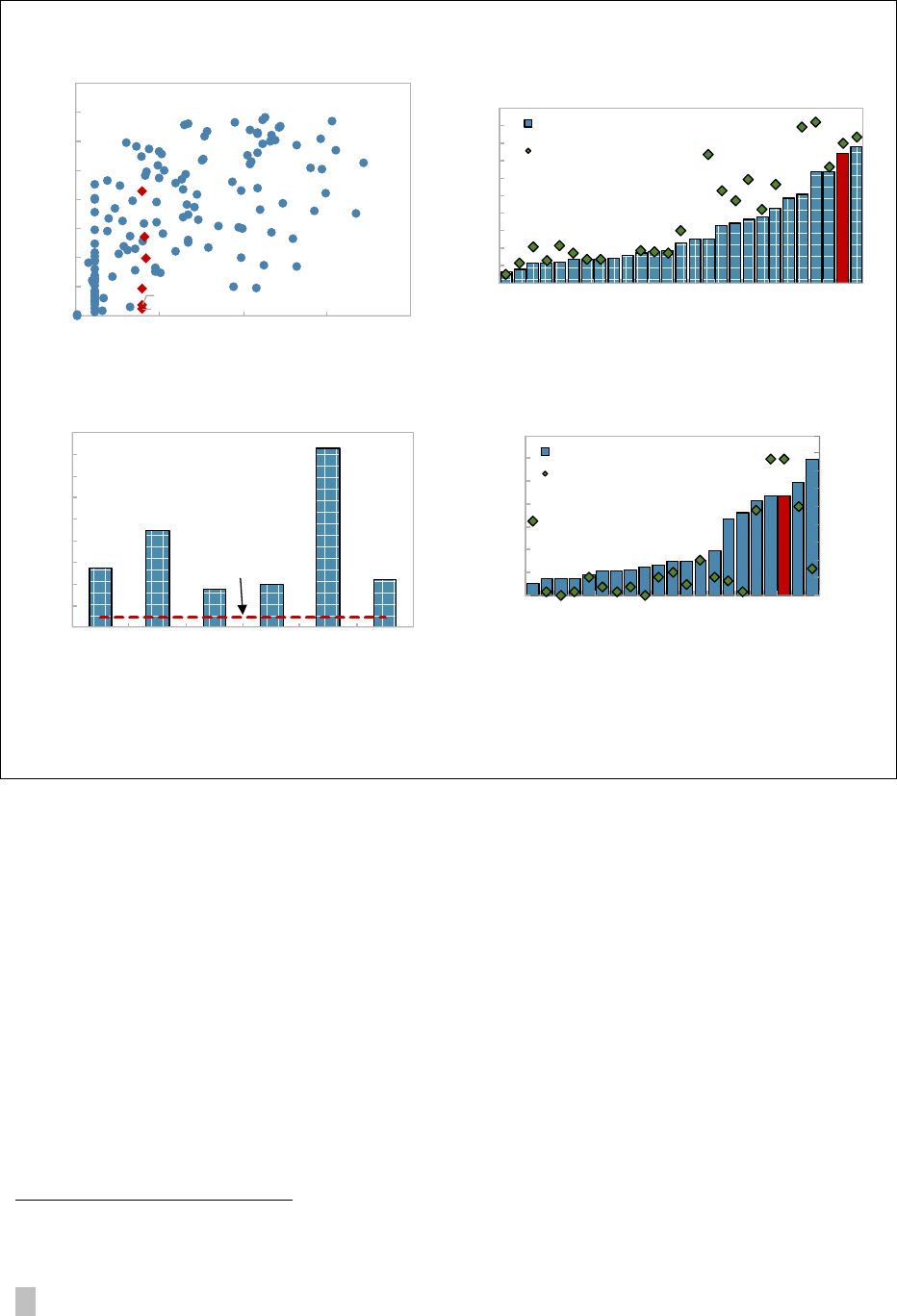
TRADE AND FOREIGN INVESTMENT
14 INTERNATIONAL MONETARY FUND
Figure 12. Direct and Indirect Trade and FDI Barriers 1/
Sources: WEF Global Competitiveness Index; OECD Stat; IMF AREARER
Report; and IMF staff estimates.
1/ Indices on the prevalence of trade barriers ranking and regulatory restrictions on FDI and their subcomponents are based on WEF’s and OECD’s
quantitative and qualitative assessment of the trade environment. These indicators should be interpreted with caution due to a limited number of
respondents, a limited geographical coverage, and standardized assumptions on business constraints, and information availability.
geographical coverage, and standardized assumptions on business constraints, and information availability. They
may also not reflect more recent important structural transformations that are ongoing in the GCC countries.
0
0.1
0.2
0.3
0.4
0.5
0.6
0.7
0.8
0.9
Bahrain Kuwait Oman Qatar Saudi
Arabia
United
Arab
Em irates
GCC: Capital Account Restrictions, 2015
(Higher number indicates more restrictions)
AE Average
0
0.01
0.02
0.03
0.04
0.05
0.06
0.07
0.08
0.09
0
0.05
0.1
0.15
0.2
0.25
0.3
0.35
Kazakhstan
South Africa
UK
OECD - Avg.
Chile
Egypt
Turkey
Morocco
Mexico
United States
Canad a
Norway
Viet Na m
Russia
India
Malaysia
China
Tunisia
Saudi Arabia
Indonesia
Philippines
restrictions on foreign equity
restrictions on key foreign personnel (RHS)
Restrictions on Foreign Equity and Key Personnel, 2017
(subcomponents of FDI Restrictiveness Index; 0=open, 1=closed)
0
0.05
0.1
0.15
0.2
0.25
0.3
0.35
0.4
0.45
0.5
Argentin a
UK
Sou th Africa
Chil e
Turkey
OEC D - Avg .
Egy pt
Morocco
Mo ngoli a
Peru
Nor wa y
United States
Br az il
Kazakhstan
Ukrain e
Viet N am
Canada
Tuni sia
Russia
Mex ico
In di a
Jo rd an
Malaysia
Chin a
In do nesia
Saudi Ar ab ia
Ph ilippines
2017
2007
FDI Regulatory Restrictiveness Index
(0=open, 1=closed)
BHR
KWT
OMN
QAT
SAU
ARE
0
20
40
60
80
100
120
140
160
0 5 10 15 20
Prevalence of Trade Barriers (Rank)
Trade Tariffs (Trad e-weighted average tariff rate)
Trade Restrictions, 2017
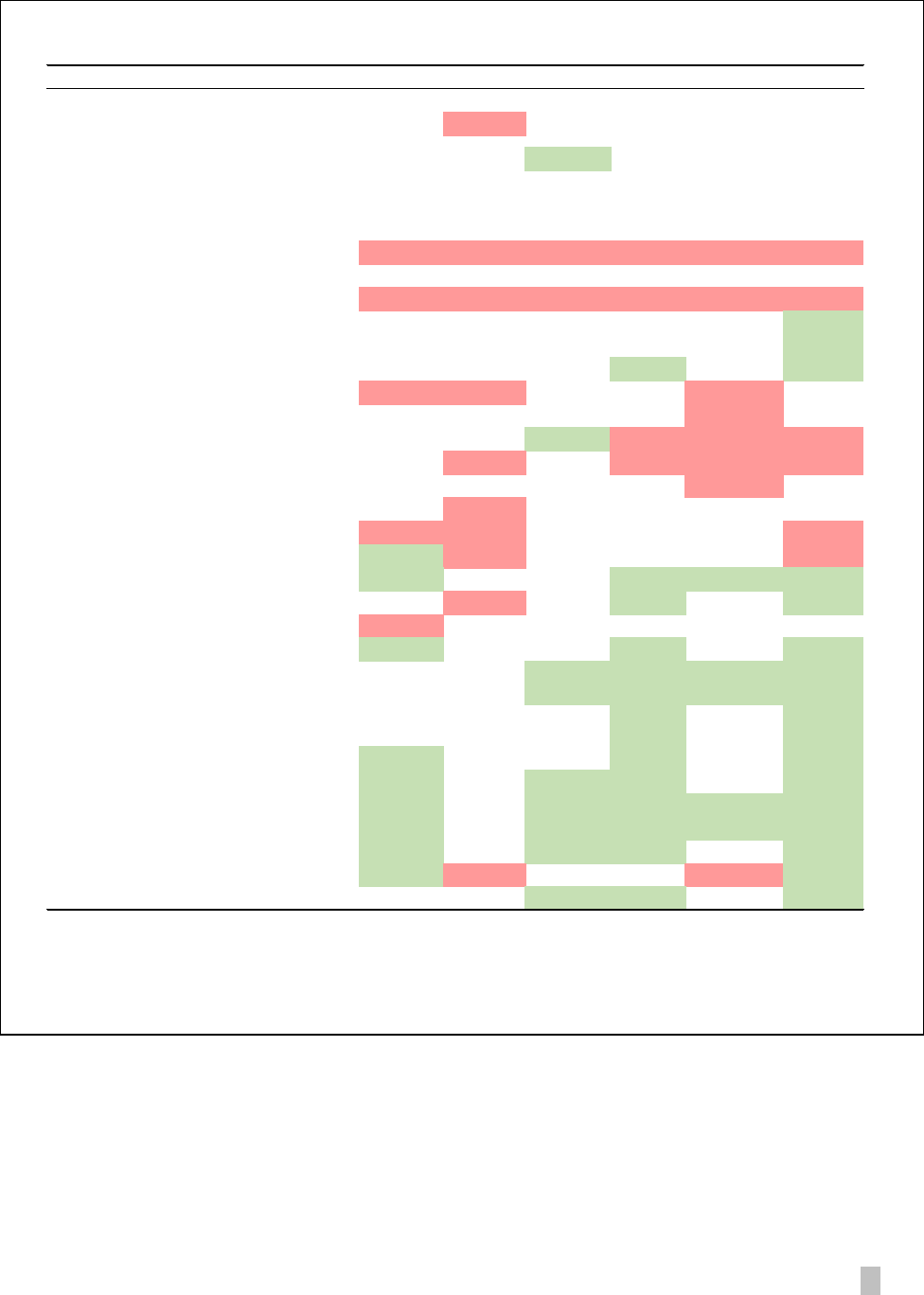
TRADE AND FOREIGN INVESTMENT
INTERNATIONAL MONETARY FUND 15
Table 1. Enabling Trade Index and Subcomponents, 2016 1/
(Highest performing and lowest performing 25
th
percentiles are marked in green and red, respectively)
Sources: World Economic Forum, The Global Enabling Trade Report, 2016; and IMF staff calculations.
1/ The World’s Economic Forum’s “Enabling Trade Index” assesses the extent to which 136 countries have in place institutions, policies,
infrastructures, and services facilitating the flow of goods over border and to their destination. These indicators should be interpreted
with caution due to a limited number of respondents, a limited geographical coverage, and standardized assumptions on business
constraints, and information availability. They may also not reflect more recent important structural transformations.
25. Unified technical standards, harmonized customs administration procedures and
reduced clearance requirements have lowered non-tariff barriers within the GCC. There
are a number of special agencies in charge of creating and implementing technical standards,
undertaking commercial arbitration, and registering patents: the Standardization and Metrology
Organization for GCC in Saudi Arabia, the Technical Telecommunications Bureau in Bahrain, and
the Regional Committee for Electrical Energy Systems in Qatar.
Bahrain
Kuwait Oman
Qatar
Saudi Arabia UAE
Overall rank (out of 136): 42
115 46 43
67 23
Domestic market access: 59 66
25
71 81
70
Tariff rate (%)
4 4 4 4 4 4
Tariff rate ranking 52
54
60 55
58 56
Share of duty free imports (%) 42 39 60 34 27 36
Foreign market access:
109 132
118
134 125
131
Tariff rate faced (%) 5
5
5 5
5 5
Tariff rate ranking
116 125 118 126 131 129
Border administration ranking:
58 90
48
46 83
25
Customs services index 56 64 77 87 63 2
Efficiency in clearance process
41 56 62 21 69 12
Time to import (documentary) 101
107 63 89
112 58
Time to import (border compliance) 72 123 81
99 126 72
Cost to import (documentary)
81 114 31
129 119
111
Cost to import (border compliance) 80
108 69 119
121 116
Time to export (documentary)
68 81 67 57
113 51
Time to export (border compliance) 99 101 83
60 96 58
Cost to export (documentary)
113 109 85 96
82 104
Cost to export (border compliance)
18 118 54
90
59 102
Irregular payments and bribes 26
77 37 12 32
6
Time predictability of import procedures 36 107
52 22
58 6
Customs transparency index 109 66
39 66 96 66
Infrastructure ranking: 34 56 41 23
36 6
Availability and quality of transport
infrastructure
40 71 32 25 31 2
Availability and quality of transport services
36 65 50 24 47
13
Availability and use of ICTs 22 42 54 29
40 19
Operating environment ranking: 23 68 30 10
39
9
Protection of property 30
76 31 19 32 22
Efficiency and accountability of government
23 71 33 11 29
2
Access to finance 23 46 33 8 44 17
Openness to foreign participation 13 123 89
52 117
30
Physical security 52
47 6 10 57 2

TRADE AND FOREIGN INVESTMENT
16 INTERNATIONAL MONETARY FUND
26. Over the past decade, GCC governments have made strides in opening their
countries to FDI, but some restrictions persist. All GCC countries have implemented reforms
to reduce red-tape and administrative burdens placed on domestic and foreign firms and actively
promoted abroad their image as an attractive business destination. Some (e.g., the UAE) have
also created special economic zones (SEZs) with independent, liberalized regulations and
well-established infrastructure. However, openness to foreign entry (outside the special
economic zones) varies widely among the GCC members, with the UAE and Bahrain being the
most liberal and Kuwait and Saudi Arabia the most restrictive.
5
Strict restrictions on foreign
ownership of land may also act as a potential impediment to FDI: such ownership is strictly
limited to zones designated by the government (Bahrain), tourist areas (Oman) or areas for
housing purposes (Qatar). Non-GCC citizens may not own land in Kuwait. While external forces,
such as geopolitical tensions and the slowdown in global FDI flows since the global financial
crisis, create headwinds, relaxing these restrictions would help reinvigorate FDI inflows.
27. The GCC governments offer a variety of incentives to attract FDI. These include:
assistance with registering and opening businesses, financial incentives, exemptions from import
duties on raw materials and equipment, and duty-free access to other GCC markets. In Kuwait,
the government has established a unit to streamline registration and licensing procedures for
foreign investors with a goal of approving licenses in 30 days. The new FDI law in Kuwait allows
for tax benefits, customs duties relief, land and real estate allocations, and permission to recruit
required foreign labor. Oman’s FDI incentives include a five-year renewable tax holiday,
subsidized plant facilities and utilities, custom duties relief on equipment and raw materials for
the first ten years.
28. While SEZs are increasingly being used in the GCC to facilitate trade and FDI, they
should be considered as part of a country’s long-term reform agenda. The UAE has
established more than 20 SEZs, where foreigners may own up to 100 percent of the equity in an
enterprise, have 100 percent import and export tax exemption and repatriate 100 percent of
capital and profits. Kuwait established a free trade zone at Shuwaikh port in 1999, which allows
for 100 percent foreign ownership and tax exemptions, and is in the process of creating two new
zones. Khalifa bin Salman Port in Bahrain has a free transit zone to facilitate the duty-free import
of equipment and machinery and has set up an international investment park that gives foreign-
owned firms the same investment opportunities as Bahraini companies. Oman has also
established three free-trade zones at strategically located ports. Saudi Arabia has announced
plans to build new economic cities. However, it bears noting that the ultimate benefits of SEZs
depend on the extent to which they are integrated with the local economy. While SEZs can
attract FDI by offering better infrastructure and regulatory environment, they should not be
viewed as the end goal, but rather as a second-best and temporary solution before more
business-friendly regulatory framework and practices are extended throughout the country.
5
In 2016, Bahrain relaxed its foreign ownership restriction to allow full foreign ownership of business except for a
few sectors, and the UAE recently announced major relaxation of foreign ownership restrictions.

TRADE AND FOREIGN INVESTMENT
INTERNATIONAL MONETARY FUND 17
Indirect trade and investment barriers
29. Rules and regulations on trade and FDI do not fully capture a country’s trade and
investment climate. Inconsistent interpretation and arbitrary application of rules may
complicate business decisions, create opportunities for corruption and gate-keeping, and, along
with public sector dominance, act as an impediment for trade and FDI. As shown in Section IV,
countries with a better business climate and investor protection tend to perform better in
realizing their export and FDI inflows potential. A conducive trade and investment climate
requires certainty that investments are protected from expropriation, that all investors (foreign
and domestic) will be given fair and equitable treatment, that the rule of law is enforced, and that
dispute settlement mechanisms and good corporate governance practices are in place.
Additionally, adequate infrastructure and a well-educated and trained workforce play a
significant role (Box 1 discusses Singapore’s success story of becoming a top FDI destination).
Governance and legal regime
30. The GCC region has made important progress in improving governance, but further
reforms are needed. Promising reforms have been implemented and more are on the way,
aimed at strengthening the rule of law, building effective safeguards against corruption, and
improving transparency in government decision making. In Bahrain, a law to completely revamp
government procurement procedures went into effect in 2003, and mandates criminal penalties
(up to 10 years imprisonment) for official corruption. In Saudi Arabia, a high-level anti-corruption
committee was established in 2017, the new public procurement law is nearing completion, and
a “whistleblower” protection framework is being put in place. In Kuwait, corruption is criminalized
with several investigations and trials involving current and former public officials underway and
the Anti-Corruption Agency is developing a national strategy for anti-corruption efforts. Still,
issues persist in the context of public administration, including in public procurement, business
licensing, and revenue administration (see IMF, 2017c; d).
31. Another important aspect of the business environment is whether corporate
governance standards and practices are adequate to assure potential investors. Weak
corporate governance can discourage international investors from investing: this is an area where
the GCC economies seem to have a substantial room for improvement. For example, potential
investors in the region often face a lack of an independent board, insufficient oversight and
scrutiny of key enterprise risks, and weak transparency and disclosure practices (S&P Global,
2017). Important reforms have recently been enacted in this area in Saudi Arabia.
32. The GCC countries have signed several investment treaties that ensure protection
for foreign investors. These treaties provide benefits and protection to foreign investors, such
as the most-favored nation treatment and national treatment, the right to make financial
transfers freely and without delay, international law standards for expropriation and
compensation, and access to international arbitration. However, legal ambiguity in the GCC
legislation can give rise to too much regulatory discretion, thereby affecting trade and
investment even if there is no explicit discrimination against foreign firms (Heuser and Mattoo,
2017).
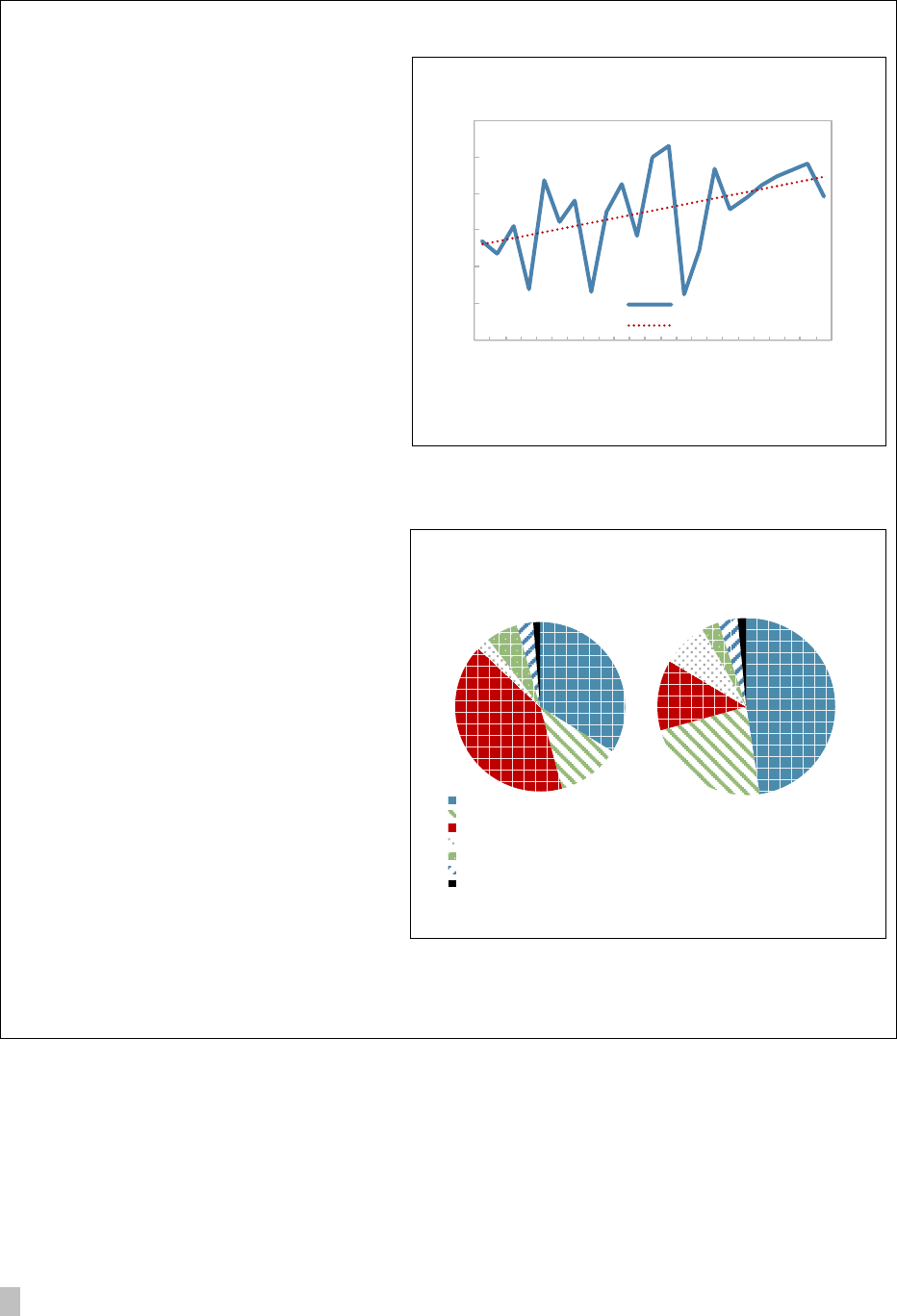
TRADE AND FOREIGN INVESTMENT
18 INTERNATIONAL MONETARY FUND
33. The GCC states have used international and regional conventions to enhance their
commercial arbitration legal frameworks, though the legal systems lag in operational
efficiency. The courts are perceived as slow and inefficient. Entrenched local business interests
with government influence can cause potential problems for foreign companies (see the 2017
EU-Gulf Cooperation Council Investment Report). The full potential of arbitration and mediation
mechanisms, which could have reduced the case load of the courts, is not utilized. Despite having
a regional GCC Commercial Arbitration Center, which is empowered to implement rules and
Box 1. Tapping Greater FDI Inflows: The Case of Singapore
Singapore’s FDI Inflows, 1995–2017
(Percent of GDP)
Singapore has been one of the most attractive
destinations for foreign direct investment. As of
end-2016, its gross FDI stock was almost three
times its GDP. Despite blips during regional
and global financial crises, its already-high FDI
inflows have continued to increase as a share
of GDP over the last two decades.
Singapore’s success in continuing to attract FDI
lies in its business-friendly environment, strong
legal and political institutions, world-class
infrastructure, and highly skilled labor force. It
has been consistently ranked near the top by
the World Bank’s “Doing Business” reports
(2
nd
in 2018), the World Economic Forum’s
“Global Competitiveness Report” (3rd in
2017-2018), and the OECD’s PISA global
education survey (1st in the latest, 2015
survey).
Composition of Singapore’s FDI Stock
Like the rest of the world, Singapore uses FDI
incentive policies, but its strategy has switched
from targeting the overall volume of FDI
inflows to target FDI in specific sectors to
maximize the impact on growth and
development. In the 1960s, it began with tax
incentives to attract FDI. By the late 1970s to
1990s, its focus shifted to promote higher-
value added production activities and to
further upgrade the labor force skills. And
starting in 2000s, the emphasis has shifted to
knowledge-based industries, including
innovation, research and development, for
example in pharmaceuticals and
biotechnology. As a result, the FDI stock in
manufacturing has declined from 41 percent of
the total FDI stock in 1990 to just 13 percent in
2016.
In recent years, responsible investment has become an important policy consideration. In addition to the
enactment of Environment Protection and Management Act, Singapore has also included labor rights and
environmental protection terms in various bilateral agreements on trade and investment.
0
5
10
15
20
25
30
1995
1997
1999
2001
2003
2005
2007
2009
2011
2013
2015
2017
FDI inflow/GDP
Linear (F DI inflow/GDP )
Sources: Country authorities; and World Economic Outlook.
48%
23%
13%
8%
3%
4%
2%
2016
Financial & Insurance Services
Wholesale & Retail Trade
Manufacturing
Professional, Scientific & Technical, Administrative & Support Services
Real estate & Construction
Information & Communications & Transport & Storage
Others
34%
12%
41%
2%
6%
3%
1%
1990
Sou rces: Singapore Department of Statistics; and IMF staff calculations.
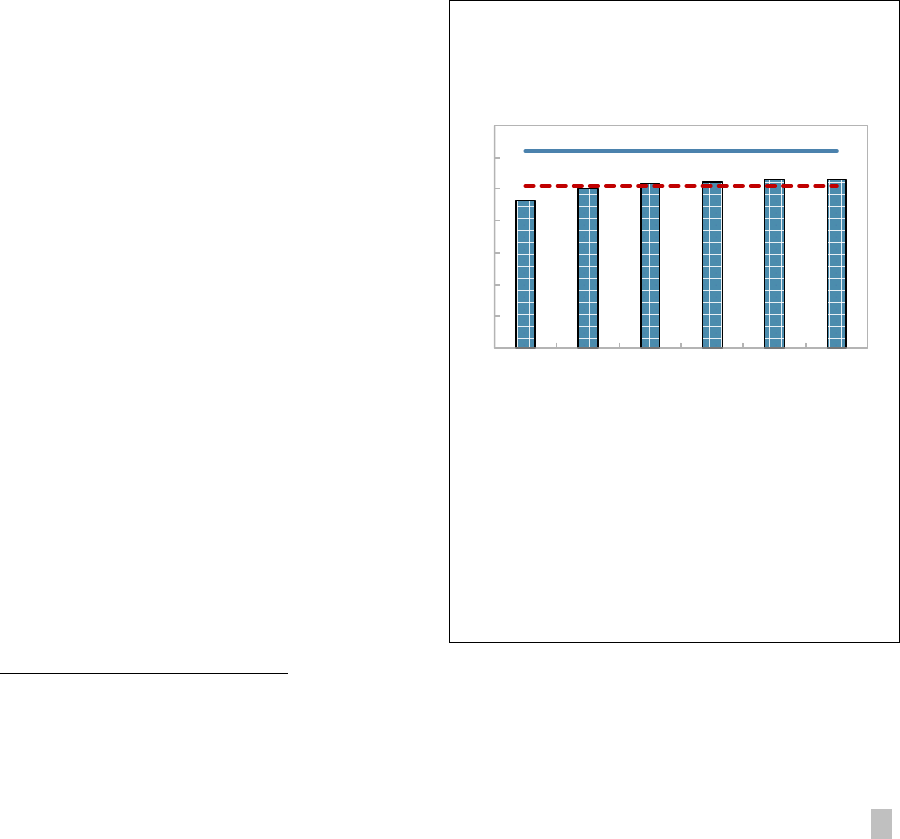
TRADE AND FOREIGN INVESTMENT
INTERNATIONAL MONETARY FUND 19
regulations in line with accepted international practice, very few cases have been brought to
arbitration so far. Furthermore, in Kuwait, nationals and foreigners who are involved in
unresolved financial disputes with local business partners can be subject to travel bans. As a
positive development, Saudi Arabia introduced specialized commercial courts in three major
cities in 2017, with the aim of expediting dispute resolution and boosting investor confidence.
34. The GCC countries lack comprehensive competition protection mechanisms.
6
While
all GCC countries have passed specific competition laws, these often do not apply to the
government or entities controlled by the government, and the enforcement mechanism is weak
(Daudpota, 2015). The Saudi Competition Protection Council is the most advanced in terms of
monitoring anti-competitive conduct; however, the law exempts public corporations and wholly-
owned state companies, and even commercial operators dealing with state-owned companies,
from the competition rules. Qatar’s law also grants exemptions to sovereign ventures and to all
entities subject to State direction and supervision. Bahrain has neither a formal competition law
nor a specialized agency to monitor competition-related issues. Kuwait has established a
Competition Protection Bureau intended to safeguard free commerce, bar monopolies, and
supervise mergers and acquisitions, but it is not yet fully operational. Oman has passed the
Competition and Anti-Monopoly Law, but
only recently established a competition
protection agency (Casoria, 2017).
Public sector dominance
35. The size of the public sector in the
GCC economies constitutes an important
impediment to private domestic and
foreign investment. The most important
economic sectors like oil and gas production,
electricity, transport and, to some extent,
telecoms are still dominated by state-owned
companies and are protected from foreign
competition. Due to the size of the public
sector, preferential treatment given to
domestic enterprises engaged in government
procurement creates an uneven playing field
and acts as a disincentive for FDI.
7
Furthermore, public procurement practices,
which substantially lag those in advanced
economies (Figure 13), may encourage low-
6
Casoria (2017) finds that notwithstanding the wide arsenal of legal tools to curb possible anticompetitive
practices, in all GCC countries, the application of competition laws and role and powers of the competition
authorities (if they exist) is still at a rudimentary stage of development.
7
The GCC states are not signatories to the WTO Government Procurement Code.
Figure 13. GCC: Average Public
Procurement Indicators, 2017 1/ 2/
(Higher score indicates better
public procurement)
0
10
20
30
40
50
60
70
Qatar Kuwait Saudi
Arabia
UAE Oman Bahrain
AE Average
EM Average
Sources: World Bank Benchmarking Public Procurement,
2017.
1/ Score is an average of 6 indicators where points are
assessed based on responses to questionnaires.
2/ The World Bank’s public procurement indicators are
based on primary data collected from surveys administered
to expert contributors in 180 economies. These indicators
should be interpreted with caution due to a limited number
of respondents, a limited geographical coverage, and
standardized assumptions on business constraints, and
information availability. They may also not reflect more
recent important structural transformations.
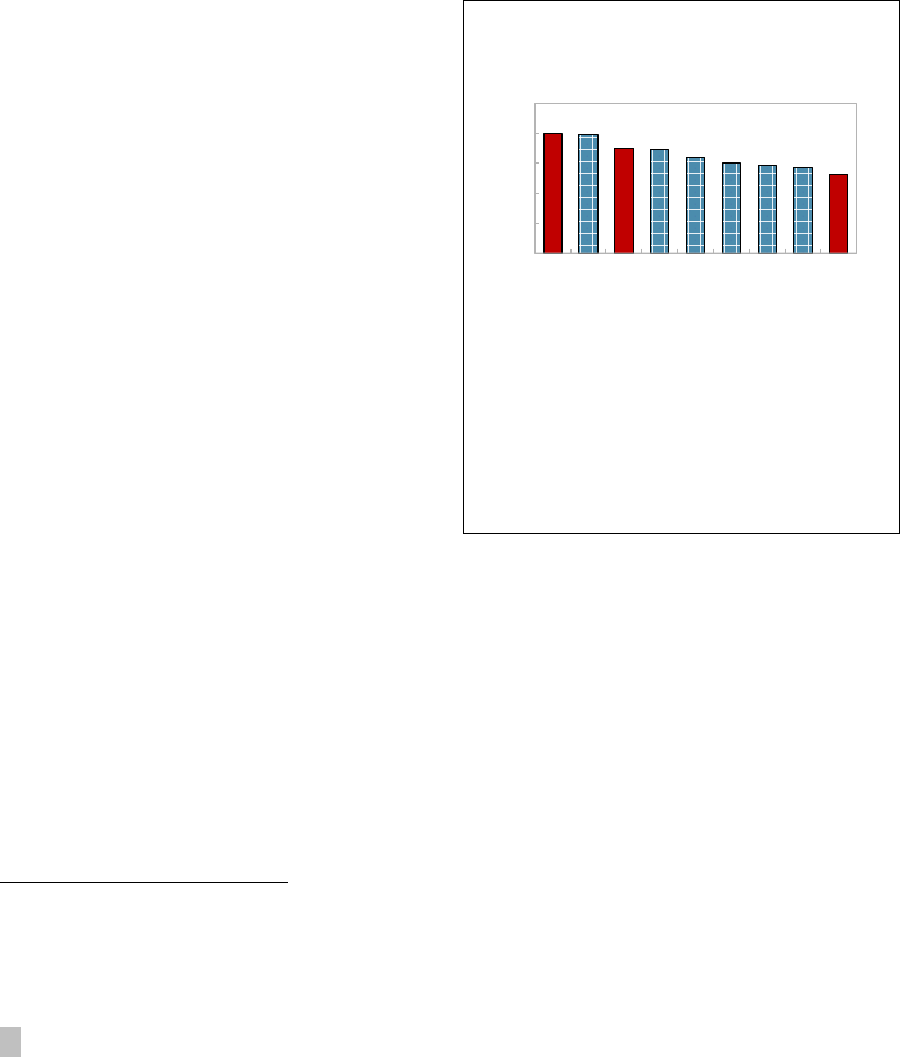
TRADE AND FOREIGN INVESTMENT
20 INTERNATIONAL MONETARY FUND
efficiency investment in non-tradable sectors and their expansion, thus potentially crowding out
tradeable sector development.
36. Recent reforms aim at reducing the share of SOEs in the economy through
privatization and PPPs. The privatization momentum is picking up in the GCC, with a number of
SOEs earmarked for privatization.
8
However, this process remains particularly complicated, due to
the long history of strong state intervention in many industries and the implicitly assumed
responsibility of the state as the employer of first resort for nationals. Furthermore, business
interests in industries that are slated for privatization may likewise try to slow down the
privatization process and opening of certain sectors to FDI.
Infrastructure and labor market
37. Most GCC countries do relatively well
in logistics performance. The World Bank’s
Logistics Performance Index (LPI)—the
weighted average of a country’s scores on six
dimensions: customs, infrastructure,
international shipments, logistics competence,
tracking and tracing, and timeliness—suggests
that Qatar and the UAE perform at or above
high-income countries’ average, while Kuwait
lags behind other GCC countries (Figure 14). As
shown in Section IV, the level of infrastructure
development matters for export diversification
and sophistication.
38. The availability of a well-educated
and skilled workforce matters for trade
diversification and FDI. As the empirical analysis in Section IV shows, human capital is a key
determinant of export performance and FDI. Faced with pressures to accommodate new entrants
into the workforce amid restricted public-sector employment, many GCC governments have
tightened regulations for hiring of foreign nationals. The regulations are especially binding for
higher-skilled jobs. This may impose constraints on potential FDI, dampen efficiency and
competitiveness, and slow down economic diversification efforts.
8
In 2016, Kuwait announced that nearly 60 percent of public sector companies are earmarked for privatization
and allowed the private sector to acquire shares of up to $9 billion in public sector firms, such as Kuwait
Petroleum Corporation. The UAE announced plans for privatization of much of the UAE services and Oman
declared that many state-owned energy companies are slated for privatization. Saudi Arabia published a
privatization program in 2018 and has issued a draft private sector participation law for public comment.
Figure 14. GCC: Logistics Performance
Index, 2018 1/
(1=low to 5=high)
4.0
4.0
3.5
3.5
3.2
3.0
2.9
2.9
2.6
0
1
2
3
4
5
Sing apo re
UAE
High Income
Qatar
Oman
Saudi Arabia
Bahrain
Kuwait
MENAP
Sources: World B ank, W orld Development In dicato rs; an d IMF
staff calculations.
1/ The World Bank’s logistics performance index is based on a
worldwide survey of stakeholders on the ground providing
feedback on the logistics “friendliness of the countries in which
they operate and those with which they trade. These indicators
should be interpreted with caution due to a limited number of
respondents, a limited geographical coverage, and
standardized assumptions on business constraints, and
information availability. They may also not reflect more recent
important structural transformations.

TRADE AND FOREIGN INVESTMENT
INTERNATIONAL MONETARY FUND 21
D. Growth Impact of Enhanced Foreign Trade and investment
There is substantial potential to boost non-oil exports and FDI in several GCC countries. Analysis
suggests large benefits from raising labor productivity, improving the quality of human capital,
enhancing the business climate, and reducing non-tariff barriers.
Expanding non-oil exports
39. The empirical approach focuses first on identifying export determinants in a sample
of non-commodity exporters.
9
Results of this analysis are then used to estimate a “benchmark”
level of non-oil exports for the GCC countries based on the assumption that the sample of non-
commodity exporters provides a reasonable benchmark for what GCC economies could
achieve.
10
A non-oil export gap is then derived. The empirical analysis suggests that country size,
income level, human capital, macroeconomic stability and the real effective exchange rate (REER)
are important determinants of non-oil exports. Trade openness (proxied by average tariffs) is not
found to be a significant determinant of non-oil exports. Similar determinants are found for
export diversification and sophistication; additionally, the level of infrastructure development
becomes a significant determinant.
40. Analysis shows substantial potential to boost exports in several GCC countries. The
estimated coefficients (Appendix II, Table A1) are used to predict the potential non-oil exports in
the GCC countries given their current fundamentals such as education, non-oil income, and other
factors that affect non-oil exports. Then actual non-oil exports are subtracted from their
estimated potentials to arrive at export gap estimates for each country. Kuwait, Oman and Saudi
Arabia are estimated to have the largest total export gaps, followed by Qatar (Figure 15). Bahrain,
and the UAE, on the other hand, seem to export more non-oil goods and services than implied
by the model, resulting in negative total export gaps. A similar picture emerges when looking at
intra-GCC trade (Box 2). When services exports are excluded, the same four GCC countries
continue to exhibit notable export gaps, while only the UAE still shows a negative export gap.
The emergence of a positive gap for Bahrain in non-oil goods exports suggests that its
overperformance in total non-oil exports can be attributed to services given its relatively large
financial sector with substantial international linkages.
9
Given the policy aim is to boost non-oil exports, the analysis is based on non-commodity exporters. The details
of the estimations and the empirical model are discussed in Appendix II.
10
A regression of non-oil exports on a sample of all countries (commodity and non-commodity exporters) that
includes oil as a determinant suggests that oil exports do have a negative impact on non-oil exports. However,
the re-estimated non-oil export gaps based on this specification are not materially different from those in the
baseline.
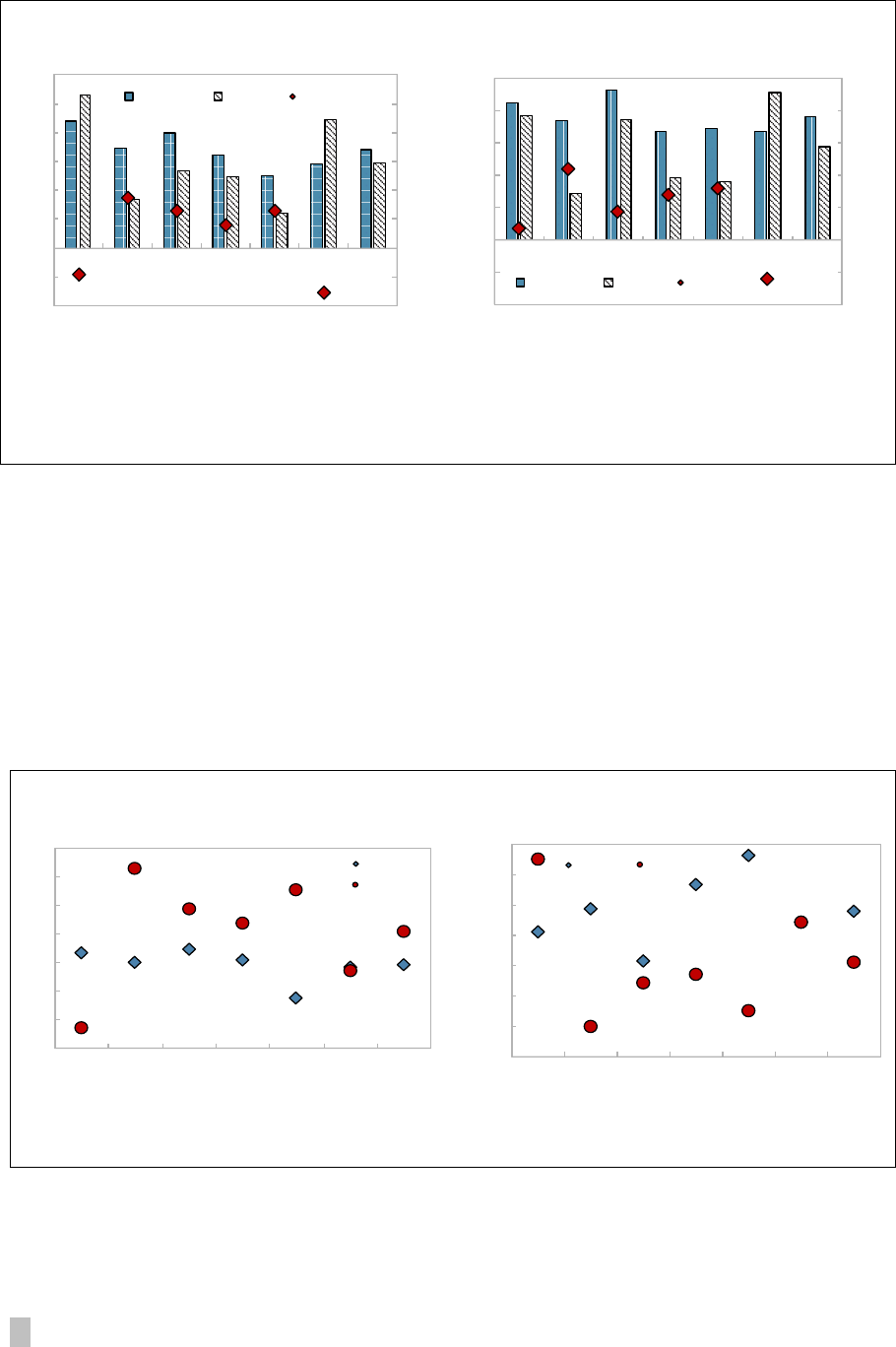
TRADE AND FOREIGN INVESTMENT
22 INTERNATIONAL MONETARY FUND
Figure 15. GCC: Potential and Actual Exports
41. A similar methodology points to lower-than-predicted export diversification and
sophistication in some GCC countries. Countries can close their non-oil goods export gaps by
increasing the diversity of export products and destinations and/or climbing up the export
quality ladder by selling goods with higher value-added. In particular, Kuwait, Saudi Arabia,
Qatar, and Oman can benefit from reducing export diversification gaps (Figure 16). These four
countries also have gaps in export sophistication, albeit the gap appears smaller for Oman.
Bahrain’s actual levels of goods export diversification and sophistication are significantly better
than what the fundamentals would suggest. Actual indices for the UAE are at levels predicted by
the model.
Figure 16. GCC: Export Diversification and Sophistication
2.5
3
3.5
4
4.5
5
5.5
6
Bahrain Kuwait Oman Qatar Saudi
Arabia
UAE Simple
average
Export diversification index, 2013 1/
(Lower index=higher diversification)
Potential
Actual
Sources: IMF Staff estimates; and Henn et al., (2013)
1/ The lower index indicates more export diversification.
3500
4000
4500
5000
5500
6000
6500
7000
Bahrain Kuwait
Oman
Qatar Saudi
Arabia
UAE Simp le
average
Export sophistication index, 2013
(Higher index=more sophistication)
Potential
Actual
Sources: IMF Staff estimates; and Cherif et al., (2018)
-20
-10
0
10
20
30
40
50
60
-20
-10
0
10
20
30
40
50
60
Bahrain
Kuwait Oman
Qatar Saudi
Arabia
UAE 2/ Simp le
average
Non-oil exports: Potential vs Actual
(Goods and services, as a percent of non-oil GDP)
Potential Actual Gap 1/
So u rces: WEO; and IMF Staff estimates.
1/ Calculated on the basis of th e d iff eren ce between potentia l
and actual levels. The exports are adjusted for re-exports.
2/ The UAE exports are adjusted for precious metals exports due
to their high share both in exports and imports.
-10
-5
0
5
10
15
20
25
-10
-5
0
5
10
15
20
25
Bahrain
Kuwait Oman Qatar Saudi
Arabia
UAE 2/ Simp le
average
Non-oil goods exports: Potential vs Actual
(Goods, as a percent of non-oil GDP)
Potential Actua l Gap 1/
So u rces: WEO; and IMF Staff estimates.
1/ Calculated on the basis of
th e diff eren ce between potentia l
and actual levels. The exports are adjusted for re-exports.
2/ The UAE exports are adjusted for precious metals exports due
to thier high share both in exports and imports.
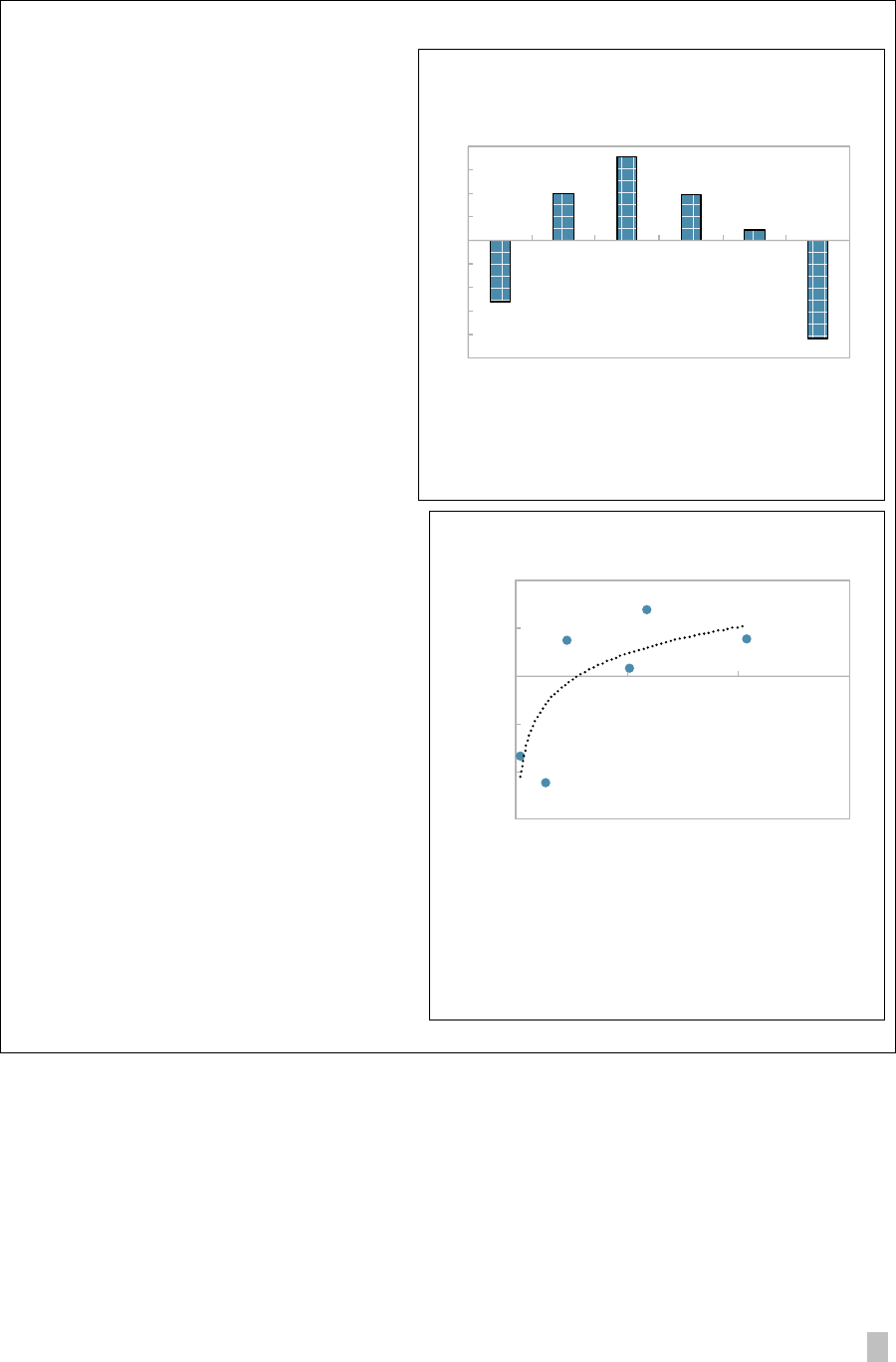
TRADE AND FOREIGN INVESTMENT
INTERNATIONAL MONETARY FUND 23
Box 2. Boosting Intra-GCC Non-Oil Trade
There is room to enhance intra-GCC trade.
A gravity model-based analysis suggests
several GCC countries exports to other GCC
members are below their potential.
1
The
largest gap is estimated for Oman, at around 7
percent of non-oil GDP, followed by Kuwait
and Qatar with a gap of around 4 percent
each. Saudi Arabia has a smaller positive gap,
while both Bahrain and the UAE have large
negative gaps. Although Oman’s goods
exports to GCC are non-negligible, a
substantial portion reflects re-exports,
particularly to the UAE, and adjusting for the
re-exports yields a relatively large gap. Closing
the gaps for the four countries can generate
additional exports of about 4 percent of non-
oil GDP on average. Greater regional trade will
also help to close total export gaps to other
parts of the world.
Reducing non-tariff barriers and enhancing
integration into regional and global value
chains are needed to increase the tradable
non-oil sector. Given that low intra-GCC trade
is mostly due to similar economic structures of
the member countries, greater regional trade
can be boosted by diversifying the economy
toward tradables. Eliminating the non-tariff
trade barriers will also help in this regard.
Finally, higher levels of backward integration to
global value chains, characterized by greater
shares of imported foreign value added and
used in the production of exports, can bring
more regional trade into the GCC (IMF, 2017b).
Smaller GCC economies can become integrated
into the supply chains of larger ones, e.g. those
of Saudi Arabia and the UAE.
_______________________
1
See Appendix II Table A3, sub-model (4) for the details
of estimation.
GCC. Intra GCC Non-Oil Goods Exports Gaps,
2015 1/
(Percent of non-oil GDP)
GCC. Trade Barriers and Intra-GCC Export
Gaps, 2015 1/
-10
-8
-6
-4
-2
0
2
4
6
8
Bahrain
Kuwait Oman Qatar Saudi
Arabia
UAE
Source: IMF staff calculations
1/Difference bewteen model predicted and actual values.
Adjusted for re-exports
BHR
KWT
OMN
QAT
SAU
ARE
-15
-10
-5
0
5
10
0 50 100 150
Non-oil export gap (percent of non-oil
GDP)
Prevalence of trade barriers (rank, 1=best)
Sou rces: World Economic Forum; and IMF Staff estimates.
1/ These indicators should be interpreted with caution due to
a limited number of respondents, a limited geographical
coverage, and standardized assumptions on business
constraints, and information availability. They may also not
reflect more recent important structural transformations.
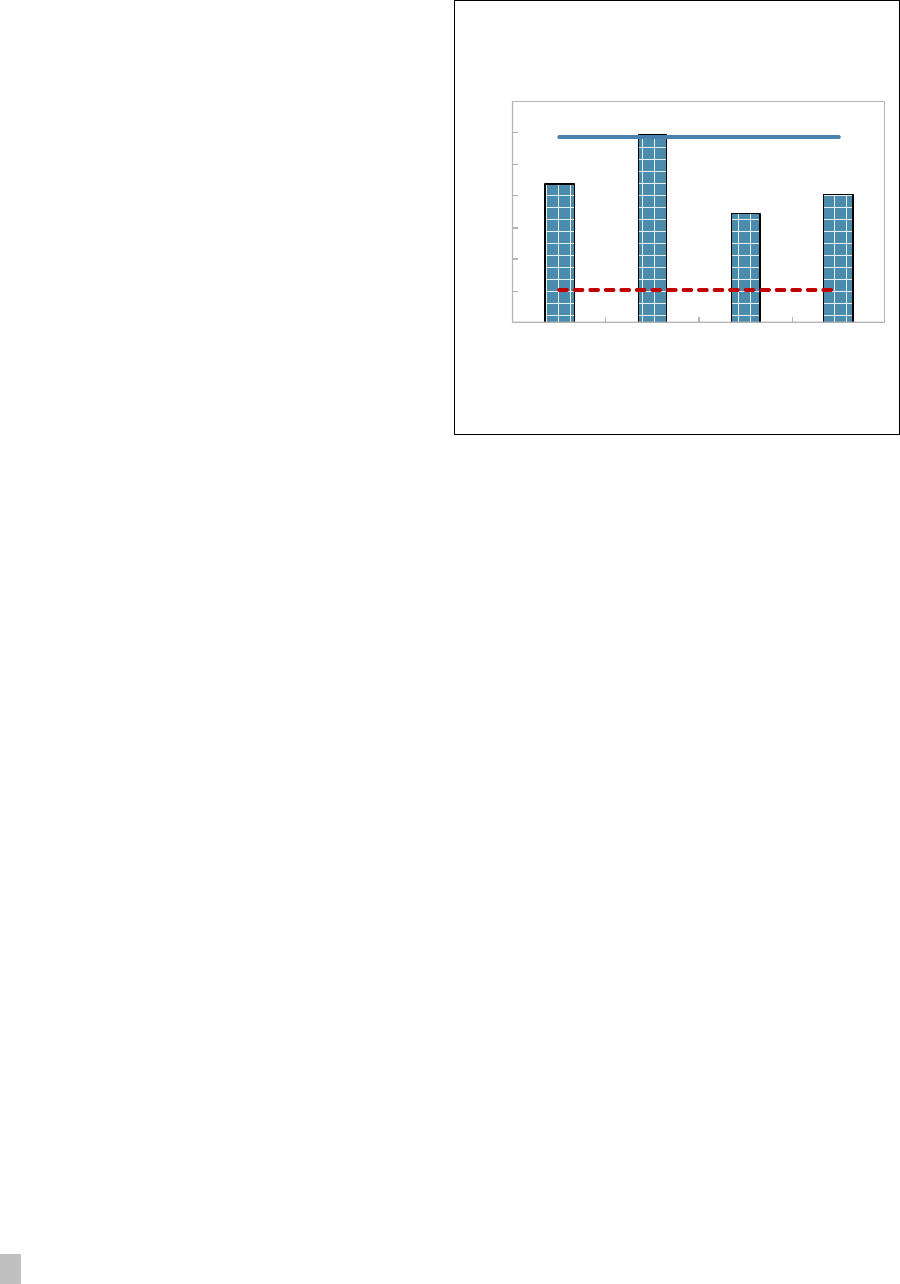
TRADE AND FOREIGN INVESTMENT
24 INTERNATIONAL MONETARY FUND
42. Beyond closing existing exports gaps, GCC countries have significant scope for
boosting non-oil export potential by improving economic fundamentals. The analysis
suggests that the REER and human capital
could be particularly important.
• Based on the traditional relationship
between REER and export performance
(whereby exports rise in response to REER
depreciation), one can argue for more
depreciated REERs in the GCC economies,
especially where the REERs are assessed to
be overvalued. However, given the still-low
degree of economic diversification and the
fact that fixed exchange rate regimes have
delivered monetary policy credibility as
well as low and stable inflation, costs of a
change in the nominal values of GCC
currencies will most likely outweigh the
benefits. Competitiveness gains can instead be achieved by lowering unit labor costs by
increasing productivity and containing relatively high average wages (Figure 17) which are
partly driven by generous public sector compensation (IMF, 2017e).
• The GCC countries, despite having similar or even higher levels of income and spending on
education, appear to lag behind the advanced economies in terms of the education
outcomes, especially in science and mathematics (IMF, 2017e). Improving education quality
in these areas and upgrading workers’ skills could be helpful in transitioning to production
and export of more complex and sophisticated goods and services as well as for raising the
overall productivity of the GCC economies. As an example, GCC’s non-oil exports can be
boosted substantially by raising the quality of education to that of the top 20
th
percentile of
advanced economies: the potential gains would be the largest for Bahrain, at around
6 percent of non-oil GDP, followed by the UAE and Oman (Figure 18). Higher quality human
capital will also work toward expanding job opportunities and making economic growth
more inclusive (IMF, 2018).
Figure 17. Average Monthly Earnings
(US Dollars, latest data available)
0
500
1000
1500
2000
2500
3000
3500
Bahrain 1/ Qatar Saudi Arabia United Arab
Em irates
AE Average
EM
Average
Sources: ILO; and IMF staff estimates.
1/ Data for Bahrain is for nationals only.
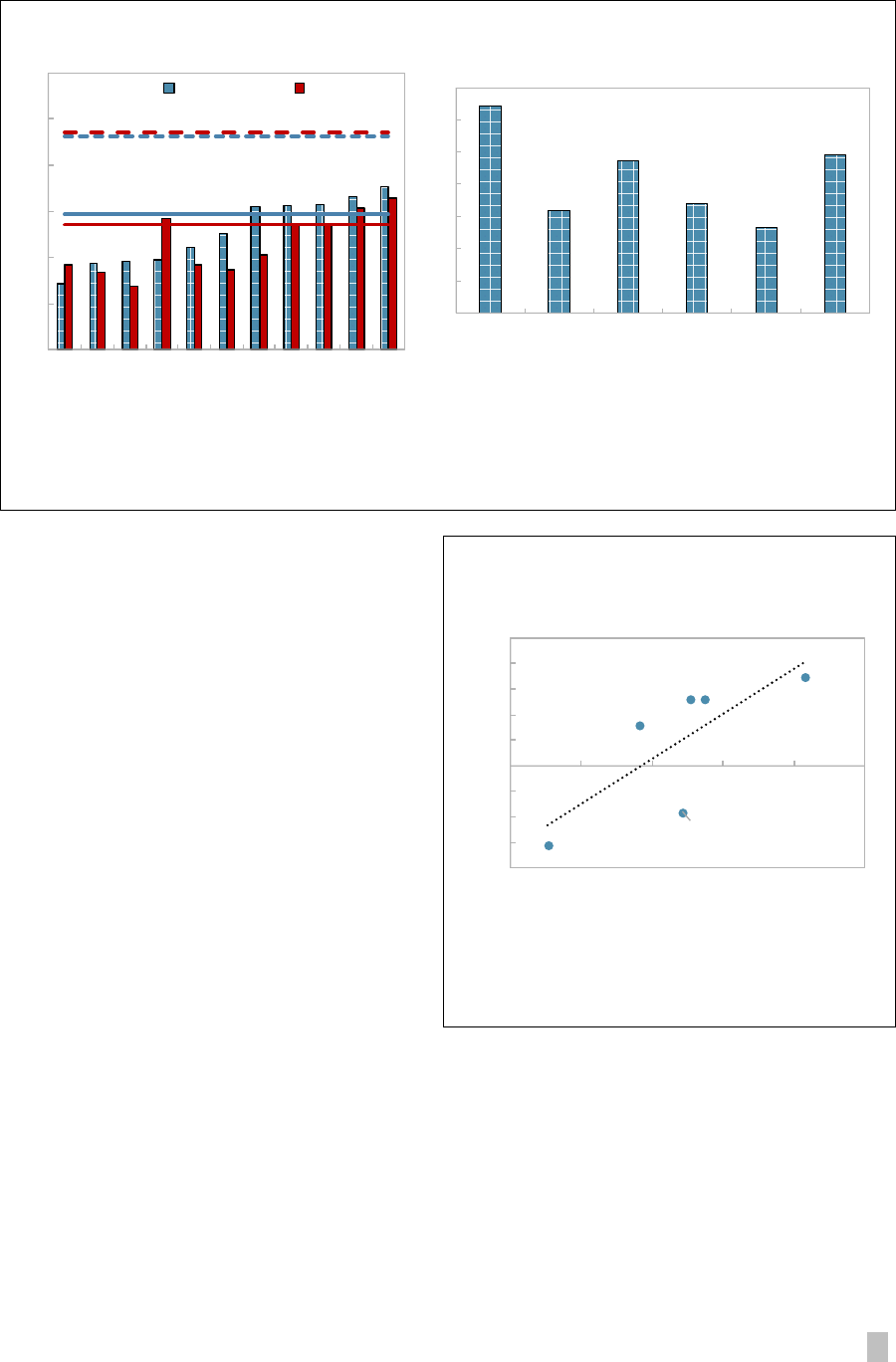
TRADE AND FOREIGN INVESTMENT
INTERNATIONAL MONETARY FUND 25
Figure 18. GCC: Human Capital
43. The estimated export gaps in the
GCC appear to be related to several factors
identified in Section III. These include public
sector dominance, business climate, and non-
tariff barriers.
• Lower-than-predicted non-oil exports
seem to prevail in a non-tradable,
domestically oriented non-oil economy.
One possible cause for underperformance
for a given size of the non-oil sector could
be the high share of non-tradables in
non-oil GDP, a by-product of public
sector dominance. To this end,
construction, public administration
and health services were defined as non-
tradable (non-exportable) sectors in the
GCC and the results indicate that a relatively large share of non-tradables in the non-oil
economy is associated with identified export gaps (Figure 19).
• Non-tariff trade barriers could be preventing some GCC countries from reaching their
potential. Furthermore, countries with better business climates tend to have smaller total
export gaps. These factors are associated with the estimated export gaps in the GCC
countries (Figure 20).
Figure 19. Non-Tradable Services and
Export Gaps, 2015
(In percent of non-oil GDP)
BHR
KWT
OMN
QAT
SAU
UAE
-20
-15
-10
-5
0
5
10
15
20
25
20 25
30
35 40 45
Non-oil export gap
Share of non-tradable services in non-oil GDP 1/
Source: IMF Staff estimates
1/ Sum of construction, public administration and health, social
and community services. The relationship is broadly unchanged
when health, social and community services are excluded.
0
1
2
3
4
5
6
7
Bahrain Kuwait Oman Qatar Saudi
Arabia
UAE
Non-Oil Export Boost from Higher Quality of Education 1/
(Goods and services, percent of non-oil GDP)
Source: WEF; IMF Staff estimates.
1/ Estimates are based on enhancing math test scores to the 80th
percentlie level of AEs. These indicators should be interpreted with
caution due to a limited number of respondents, a limited
geographical coverage, and information availability. They may also
not reflect more recent important structural transformations.
300
350
400
450
500
550
600
EGY
MAR
SAU
LBN
KWT
JOR
OMN
IRN
QAT
BHR
UAE
Science Scores
Math Scores
TIMSS 8th Grade Scores for the Region, 2015 1/
AE Averages
EM Averages
Sources: TIMSS 2015;
and IMF staff calculations.
1/ These indicators should be interpreted with caution due to a
limited n umber of respondents, a limited geographical
coverage, and information availability. They may also not
reflect more recent important structural transformations.
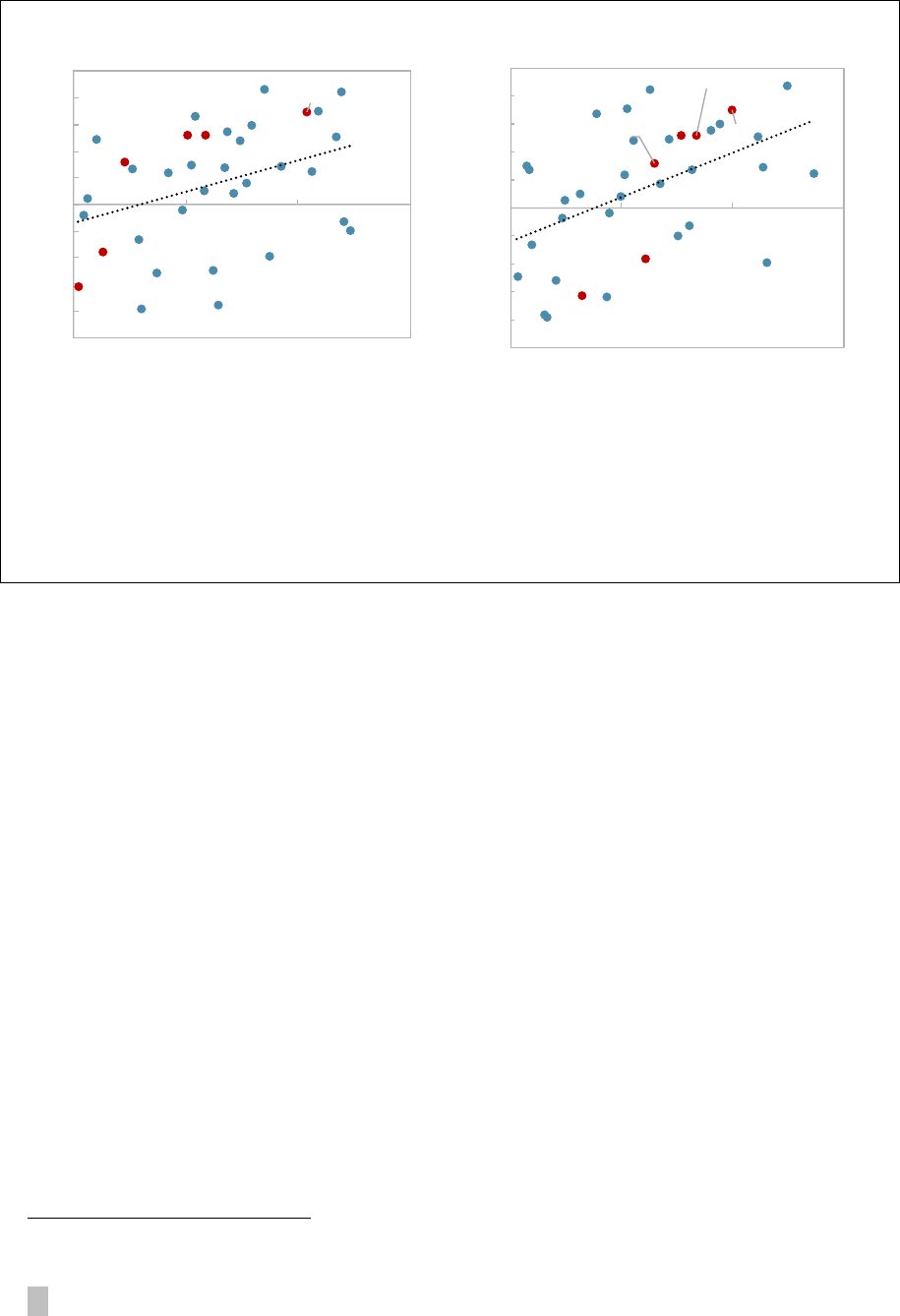
TRADE AND FOREIGN INVESTMENT
26 INTERNATIONAL MONETARY FUND
Figure 20. GCC: Trade Barriers and Business Climate
44. Further empirical analysis confirms that additional determinants of non-oil exports
appear to be important for commodity exporters. While non-tariffs barriers and the business
climate were not found to be statistically significant when included in the baseline, a re-
estimation of the baseline regression for commodity exporters found the quality of legal system
(a proxy for business climate) and non-tariff trade barriers to be statistically significant (Appendix
II, Table A2). Additionally, trade openness (proxied by average tariffs) became a statistically
significant determinant of non-oil exports. Thus, in addition to enhancing competitiveness and
human capital, the GCC economies could boost their non-oil exports by improving the quality of
their legal systems and reducing non-tariff barriers to trade.
Attracting more FDI
45. A similar empirical approach is employed to identify FDI inflow potential of the
GCC countries.
11
Trade openness (measured as the share of total exports and imports in GDP),
economic growth, quality of legal systems, and human capital are found to have positive and
significant impact on FDI inflows in the non-commodity exporters group; while capital account
restrictions have the opposite impact. Moreover, having a fixed exchange rate is also found to
have some positive impact on FDI inflows. These estimated coefficients are used to calculate
11
The details of the estimations as well as the empirical model are discussed in Appendix II.
BHR
KWT
OMN
QAT
SAU
UAE
-25
-20
-15
-10
-5
0
5
10
15
20
25
0
50
100 150
Non-oil export gap (percent of non-oil G DP)
Prevalence of trade barriers (rank, 1=best)
Trade barriers and export gaps, 2015 1/ 2/
Sou rces: W orld Economic F orum; and IMF Staff estimates.
1/ Blue dots are non-commodity exporters for which data w as
available.
2/ These indicators should be interpreted with caution due to a
limited n umber of respondents, a limited geographical coverage,
and standardized assumptions on business constraints, and
information availability. They may also not reflect more recent
important structural transformations.
BHR
KWT
OMN
QAT
SAU
UAE
-25
-20
-15
-10
-5
0
5
10
15
20
25
0 50 100 150
Non-oil export gap (percent of non-oil G DP)
Ease of doing business (rank, 1=best)
Business climate and export gaps, 2015 1/ 2/
Sou rces: W orld B ank; and IMF Staff estimates
1/ Blue dots are non-commodity exporters for which data w as
available.
2/ These indicators should be interpreted with caution due to a
limited n umber of respondents, a limited geographical coverage,
and standardized assumptions on business constraints, and
information availability. They may also not reflect more recent
important structural transformations.
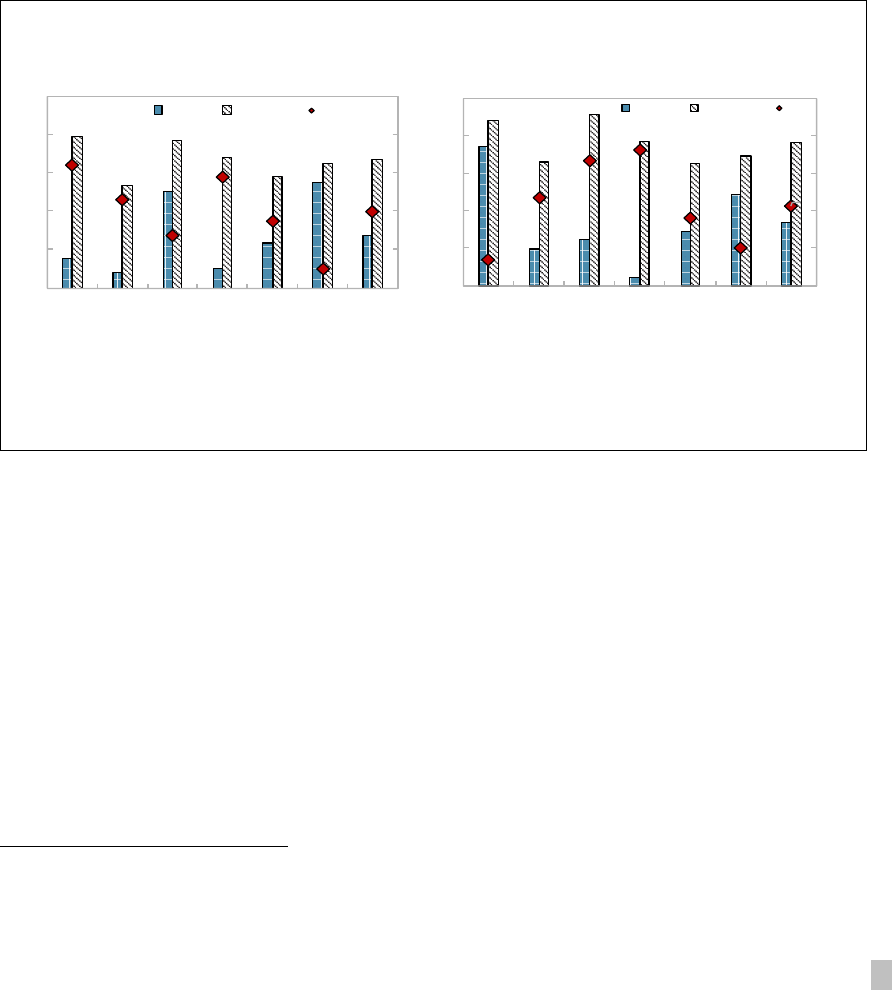
TRADE AND FOREIGN INVESTMENT
INTERNATIONAL MONETARY FUND 27
potential FDI among the out-of-sample GCC countries. The estimated FDI potential is then
compared to the actual level to derive FDI gaps.
46. Results suggest the GCC countries could attract more FDI relative to current levels.
On average, the GCC countries are estimated to have the potential to attract additional of
around 2 percent of GDP (Figure 21). Given the high volatility of FDI inflows, the results of the
gap analysis for individual countries are sensitive to the period under examination. For 2016, the
biggest gaps are observed in Bahrain and Qatar, at around 3 percent of their GDP, while the UAE
estimate shows the smallest gap at 0.4 percent. To smooth out the volatility in FDI inflows, the
averages for 2011–16 are also considered: in this case, Bahrain’s gap narrows to be the smallest
among the GCC, while gaps widen in all the other GCC countries with Oman and Qatar’s gap
becoming the largest.
12
Figure 21. GCC: FDI Inflows 1/ 2/
47. Recent reform initiatives to strengthen minority investor protection could help
close some of the FDI gaps. While minority investor protection is not a significant explanatory
variable of FDI for the non-commodity exporters group, it is highly correlated with FDI in the
case of commodity exporters (Appendix Table A.4). Recent reform initiatives to improve minority
investor protection in the region, such as those implemented in Saudi Arabia (where measures,
among other things, relate to disclosure, accountability and dispute resolution), are expected to
help close the gaps.
48. Reforms in the GCC countries could increase potential FDI inflows. For example,
continued reforms to the legal environment and the education system with a focus on improving
education quality, as well as further liberalization of restrictions on FDI, could help increase FDI
12
These gaps were also estimated with coefficients based on alternative regression methods and samples. The
results are broadly in line with those in the baseline estimation. Due to lack of data granularity, we do not
differentiate between oil and non-oil FDI potentials in the GCC.
3.2
2.3
1.3
2.9
1.7
0.5
2.0
0
1
2
3
4
5
0
1
2
3
4
5
Bahrain Kuwait Oman Qatar Saudi
Arabia
UAE GCC
simp le
average
Actual and Potential FDI Inflows in 2016
(Percentage of GDP)
Actual Potential Gap
Source: IMF Staff estimates
1/ Potential FDIs are computed u sing model
-bas ed co efficients estimated w ith o ut-of-sample data (Column 1 in Table A4) and
GCC right-hand-side variables.
2/ FDI gap is the difference between the potential and actual FDI inflows.
0.7
2.3
3.4
3.6
1.8
1.0
2.1
0
1
2
3
4
5
0
1
2
3
4
5
Bahrain Kuwait Oman Qatar Saudi
Arabia
UAE GCC
simp le
average
Actual Potential
Gap
Actual and Potential FDI Inflows: 2011
-16
(Percentage of GDP)
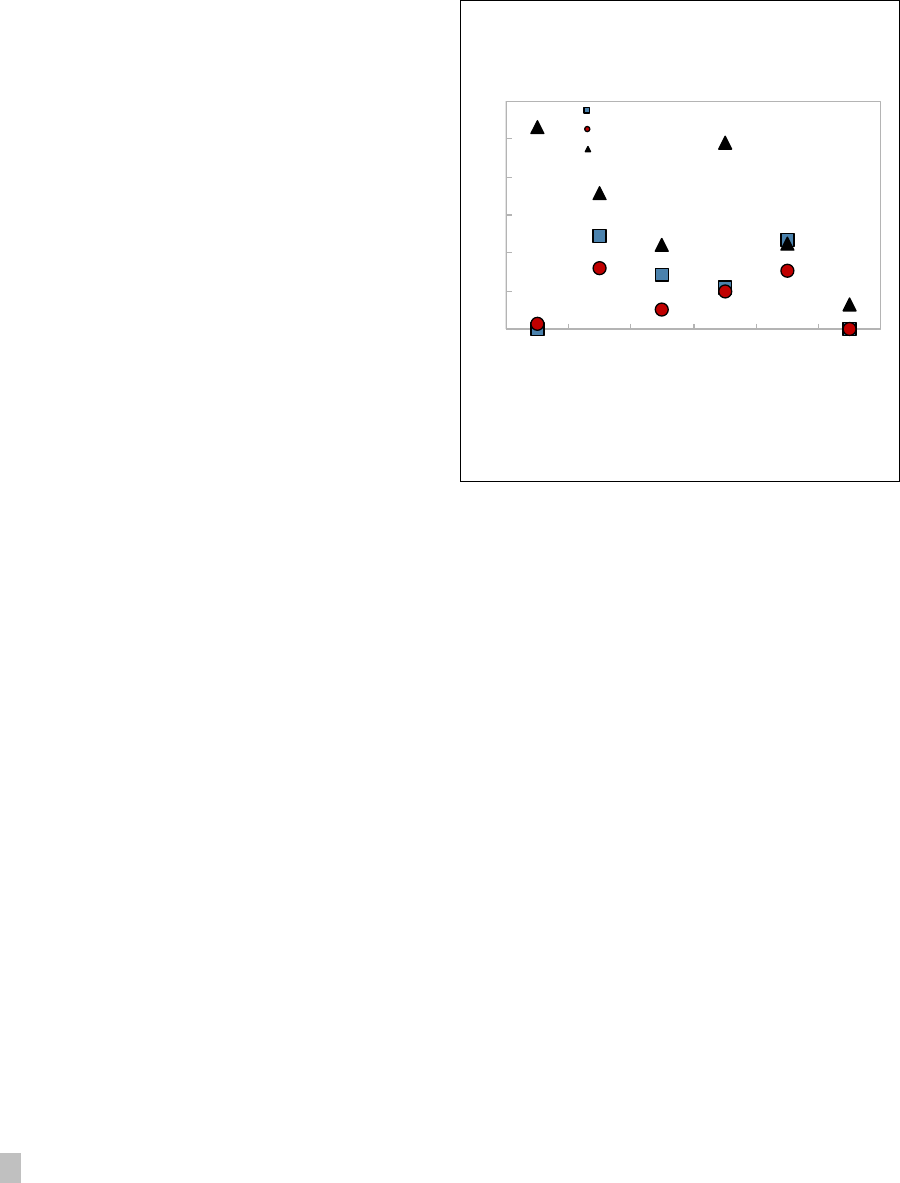
TRADE AND FOREIGN INVESTMENT
28 INTERNATIONAL MONETARY FUND
potential by an average of ½ percentage point of GDP across the GCC, if these areas are
improved to levels in line with advanced economy averages.
Boosting growth
49. The growth impact of closing export and FDI gaps could be significant (Figure 22).
FDI and trade openness contribute positively to
real per capita GDP growth (Appendix II, Table
A6). To estimate the growth potential, the
smallest coefficient estimates on FDI (0.35 from
sub-model (6) result) and trade openness
(2.48 from sub-model (4) result) in the growth
regression were applied to the identified export
and FDI gaps. Since the regression coefficient is
on trade openness, it was assumed that
increases in trade openness would only be
driven by reductions in the identified export
gaps. In most countries, the biggest boost to
growth would come from closing the FDI gap,
with Qatar, Bahrain and Kuwait gaining around
one percentage point in non-oil real per capita
GDP growth. Growth gains in the rest of the
GCC vary from 0.1 to 0.5 percentage point.
Closing export gaps could provide an additional growth dividend of between 0.2 and 0.5
percentage point for Kuwait, Oman, Qatar, and Saudi Arabia.
E. Concluding Remarks
50. The GCC economies are rightly pursuing further diversification to support higher,
sustained and more inclusive growth. A more open and diversified economy would reduce
exposure to volatile hydrocarbon revenues, help create private sector jobs, and increase
productivity.
51. Enhancing foreign trade and investment is an integral part of such diversification
efforts. Broadening and upgrading their export bases can help GCC countries better integrate
into global value chains and make their economies more productive. Boosting intra-GCC trade
and investment would also contribute to raising income levels in the GCC economies. FDI can
bring access to foreign markets, better management practices and technical know-how to the
domestic economy, enhancing work force skills and increasing productivity. Estimates in the
paper suggest that reducing export and FDI gaps could be associated with a substantial increase
in growth. The biggest boost would come from closing the FDI gaps—up to one percentage
point increase in real non-oil per capita GDP growth. Closing export gaps would provide an
additional increase in the range of 0.2-0.5 percentage point.
Figure 22. GCC: Per Capita Non-Oil
Growth Gains 1/
(Percentage points)
0
0.2
0.4
0.6
0.8
1
1.2
Bahrain Kuwait Oman Qatar Saudi
Arabia
UAE
Total exports
Goods exports
FDI
Source: IMF Staff estimates
1/ Lowest estimated coeffecients from growth regression were
applied to each identified export and FDI gaps in 2015 and
2016, respectively.

TRADE AND FOREIGN INVESTMENT
INTERNATIONAL MONETARY FUND 29
52. The analysis in this paper points to several priorities for the GCC policy makers to
realize non-oil export and FDI potential. In particular:
• Continue to invest in human capital by strengthening education systems to provide the
knowledge and skills needed to prepare workers for the demands of the modern economy;
• Implement labor market reforms to improve productivity in order to reduce unit labor costs
and boost the competitiveness of the non-oil economy;
• Put in place legal frameworks that ensure adequate predictability and protection, including
for minority investors, and provides for dispute prevention and resolution mechanisms;
implement anti-bribery and integrity measures in public governance, including by addressing
conflicts of interest;
• Improve the business climate, including by further liberalizing foreign ownership regulations;
strengthening corporate governance standards and practices; lowering restrictions on
mobility of foreign workers to enhance competition and promote trade and investment;
reducing trade costs by streamlining and automating border procedures;
• Further reduce non-tariff barriers to trade and strengthen regulatory co-operation with the
main trading partners while striving to contribute to multilateral reduction of such barriers;
engage in trade negotiations with countries with which trade complementarity is high and no
free trade agreement exists.
53. Additionally, a reduced role of the public sector in the economy could help boost
FDI and develop tradable sectors. Raising the efficiency of public investment and focusing it on
further upgrading key infrastructure that facilitates trade and investment will be important.
Improving public procurement based on transparency, accountability, and equitable treatment
for potential suppliers could also help.
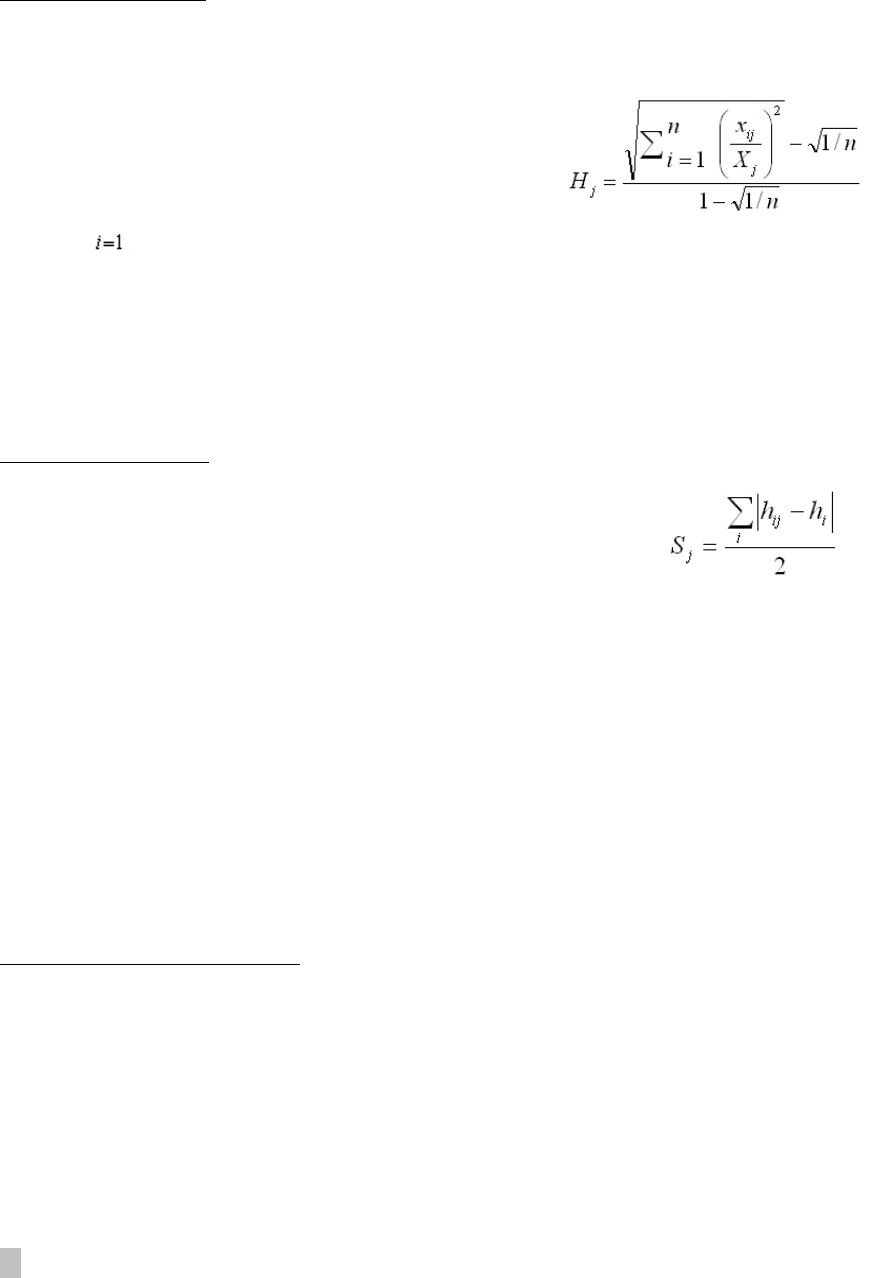
TRADE AND FOREIGN INVESTMENT
30 INTERNATIONAL MONETARY FUND
Appendix I. Export Indices
Concentration index:
1. Concentration index, also named Herfindahl-Hirschmann Index (Product HHI), is a
measure of the degree of product concentration. The following normalized HHI is used in order
to obtain values between 0 and 1: where
H
j
= country or country group index
x
ij
= value of export for country j and product i
and
n = number of products (SITC Revision 3 at 3-digit group level).
2. An index value closer to 1 indicates a country's exports or imports are highly
concentrated on a few products. On the contrary, values closer to 0 reflect exports or imports are
more homogeneously distributed among a series of products.
Diversification index:
3. The diversification index is computed by measuring the
absolute deviation of the trade structure of a country from world
structure:
where
h
ij
= share of product i in total exports or imports of country or country group j
h
i
= share of product i in total world exports or imports.
The diversification index takes values between 0 and 1. A value closer to 1 indicates greater
divergence from the world pattern.
4. This index is a modified Finger-Kreinin measure of similarity in trade. For more
information, please see Finger, J. M. and M. E. Kreinin (1979), “A measure of ‘export similarity’ and
its possible uses” in the Economic Journal, 89: 905-12.
Product complexity of Exports
5. Following Hausmann, Hwang, and Rodrik (2007), product sophistication is measured by
computing the productivity level associated with product at time as the weighted
average of per capita GDP levels of countries exporting that product, with the weights
corresponding to the revealed comparative advantage of each country in that product:

TRADE AND FOREIGN INVESTMENT
INTERNATIONAL MONETARY FUND 31
=
Export sophistication of country at time is the weighted average of productivity levels
(s) for all products this country exports, with the weights corresponding to the shares of
these products in total exports of country :
=
Export quality
6. The index is estimated based on unit values of exports, adjusted for the impact of
production costs and pricing strategies. To enable cross-product comparisons, all quality
estimates are first normalized by their 90th percentile in the relevant product-year combination.
The quality estimates are then aggregated, using current trade values as weights. The resulting
quality values typically range between 0 and 1.2. A value closer to 0 indicates lower quality.
Revealed comparative advantage (RCA)
=
Where
stands for gross exports of product for country , so the numerator
/
refers to
the share of product in the overall exports of country , and the denominator captures the
global share of product exports in total world exports. An RCA between 0 and 1 indicates a
comparative disadvantage, while above 1 it indicates comparative advantage.

TRADE AND FOREIGN INVESTMENT
32 INTERNATIONAL MONETARY FUND
Appendix II. Regression Analysis
Regression analysis of export potential
1. Based on the existing literature on the determinants of exports (e.g., Rahman et al.,
2015), the following model is used for estimation on a sample of 152 non-commodity exporters,
covering the period 1989-2015:
,
= +
,
+
+
,
(1)
where
,
denotes exports; the subscript i denotes country and the subscript t denotes year.
indicates the country fixed effect.
,
is a vector of country-specific factors including the size of
the population as a proxy for the country size; per capita income as a proxy for the level of
economic development; real effective exchange rate (REER) as a measure of competitiveness;
average tariffs as a measure for trade openness; gross tertiary enrollment as a proxy for human
capital; inflation as a measure of macroeconomic stability; and fixed telephone lines as a proxy
for infrastructure. Detailed definition and sources of data will be available in Baltabaev
(forthcoming). Equation (1) is estimated using panel random effects estimator under the baseline
specification. Further robustness tests with other estimators were also conducted.
2. The results indicate that the size of the country, per capita income, REER and
human capital are key determinants of total exports in non-commodity exporting
countries (Table A1, sub-model (1)). The magnitude of the estimated coefficients is close to
findings in other trade literature (see, Santos and Tenreyro, 2006; Baxter and Kouparitsas, 2006;
Head et al., 2010) Inflation (proxy for macroeconomic instability) is found to reduce total exports
only marginally. While the signs for tariffs and telephone lines are as expected, they are not
statistically significant. Comparable results are obtained when the dependent variable is replaced
with goods exports, instead of total exports in sub-model (2).
1
The same variables can help
explain export diversification and sophistication. Given that both diversification and
sophistication indices already include oil exports as a component, regressions in sub-models (3)
and (4) have been run on a sample of both commodity and non-commodity exporter countries
by including dummies for the former.
3. A separate regression was carried out with a shorter time period data, by including
the quality of legal system to proxy for business climate, non-tariff barriers and quality of
education system (and dropping gross tertiary enrollment due to the inclusion of another
measure of human capital). These additional variables were not statistically significant in a
sample of non-commodity exports. However, in a sample of commodity exporters, the results in
Table A2 indicate non-oil exports are indeed influenced by these variables in a statistically
significant way. All three have the expected positive signs when separately included.
1
Specification with FDI inflows over GDP was also considered, but no significant effect was found.

TRADE AND FOREIGN INVESTMENT
INTERNATIONAL MONETARY FUND 33
4. Gravity model regressions were used to estimate potential intra GCC trade. To deal
with the problem of potential 0 values in bilateral trade, the Poisson Pseudo Maximum
Likelihood (PPML) technique (Santos and Tenreyro, 2006; Head et al., 2010) was employed to
estimate equation (2) on a sample of non-commodity exporters, covering 1989-2014:
= +
+ +
,
(2)
where
denotes exports from country i to j; and the subscript t denotes year.
is a vector
of gravity model pair variables including population, per capita income, distance and other
geographic variables. The bilateral trade and gravity data were obtained from CEPII (Mayer and
Zignago, 2011). These results are reported in Table A3, sub-model (4).
Regression analysis of FDI potential
5. Following the literature, the determinants of FDI were estimated with equation (3),
using a sample of 64 non-commodity exporters, including 41 EMDEs, from 1995-2016 (e.g.
Bengoa and Sanchez-Robles, 2003, Walsh and Yu, 2010):
,
= +
,
+
+
,
(3)
where
,
denotes FDI inflow as a share of GDP, the subscript i denotes country i and the
subscript t denotes year t.
denotes the country fixed effect.
,
denotes a vector of country-
specific factors including education, trade openness, institutional qualities, capital account
openness, real GDP growth, and exchange rate regime. All explanatory variables are lagged by
one period to alleviate potential endogeneity problem.
captures time-invariant country
characteristics and
,
denotes error term. The sample was restricted to non-commodity
exporters due to the intention to estimate the FDI potentials for the GCC countries if they were
more diversified. The results of FDI regression are in Table A4.
Regression analysis of growth
6. System-GMM estimator was used for the determinants of per capita income growth
(IMF, 2017, Beaton et al., 2017), The econometric model is given in equation (4), which is
estimated on a sample of non-commodity exporters on five-year averaged data, covering the
period 1960-2013:
,
= +
,
+
+
,
(4)
where
,
denotes real per capita GDP growth; the subscript i denotes country and the subscript
t denotes year.
indicates the country fixed effect.
,
is a vector of country-specific regressors
including initial GDP per capita, human capital, fixed telephone lines (proxy for infrastructure),
trade openness, export diversification index, export sophistication index, and the share of FDI
inflows in GDP. The results of this regression are reported in Table A5.

TRADE AND FOREIGN INVESTMENT
34 INTERNATIONAL MONETARY FUND
Table A1. Determinants of Exports in Non-Commodity Exporters: Random Effects
Regression
Total exports
Goods exports
Diversification
1
Sophistication
(1)
(2)
(3)
(4)
Population
0.812***
0.921***
-0.063***
0.058***
(0.000)
(0.000)
(0.000)
(0.001)
GDP per capita
0.933***
0.943***
-0.039
0.124***
(0.000)
(0.000)
(0.204)
(0.000)
REER
-0.376***
-0.343**
0.135**
-0.102*
(0.002)
(0.010)
(0.012)
(0.067)
Tariffs
-0.040
-0.031
-0.000
-0.007
(0.194)
(0.544)
(0.992)
(0.754)
Human capital
0.127**
0.124
-0.046**
0.053**
(0.031)
(0.104)
(0.041)
(0.049)
Inflation
-0.020*
-0.042***
0.005
0.004
(0.053)
(0.002)
(0.250)
(0.505)
Infrastructure
0.017
0.015
-0.037**
0.062***
(0.671)
(0.706)
(0.038)
(0.004)
Commodity exporter dummy
0.368***
-0.617***
(0.000)
(0.000)
Constant
-16.717***
-19.182***
2.014***
7.298***
(0.000)
(0.000)
(0.000)
(0.000)
Time dummies
Yes
Yes
Yes
Yes
Number of countries
112
112
152
151
Observations
1510
1512
1775
1783
Country Sample
Non-commodity
Non-commodity
All countries
All countries
Sample period
1989-2015
1989-2015
1989-2013
1989-2013
p-values in parentheses with significance levels of
*
p < 0.10,
**
p < 0.05,
***
p < 0.01. All variables are in natural
logs. Population is used for country size, while per capita income for the level of development, REER for
competitiveness, tariffs for trade openness, gross tertiary enrolment for human capital, inflation for
macroeconomic stability, fixed telephone subscriptions for infrastructure. Since logistic performance index
discussion in Section III is not widely available and captures more than just the infrastructure variable, fixed
telephone lines are used for infrastructure instead.
1
The lower index indicates more export diversification.

TRADE AND FOREIGN INVESTMENT
INTERNATIONAL MONETARY FUND 35
Table A2. Determinants of Non-oil Exports in Commodity Exporters: Random Effects
Regression.
Total exports
Total exports
Total exports
Total exports
(1)
(2)
(3)
(4)
Population
0.722
***
0.734
***
0.687
***
0.638
***
(0.000)
(0.000)
(0.000)
(0.000)
GDP per capita
0.605
***
0.329
***
0.663
***
0.534
***
(0.000)
(0.005)
(0.000)
(0.000)
REER
-0.543
**
0.418
-0.292
***
-0.238
***
(0.015)
(0.134)
(0.000)
(0.000)
Tariffs
-0.146
**
-0.126
**
-0.126
*
-0.083
(0.043)
(0.019)
(0.084)
(0.229)
Human capital
0.050
0.232
**
(0.588)
(0.034)
Inflation
-0.017
-0.046
-0.031
-0.046
***
(0.586)
(0.119)
(0.156)
(0.008)
Infrastructure
0.099
0.222
**
-0.032
-0.048
(0.222)
(0.010)
(0.555)
(0.297)
Quality of legal system
0.330
**
0.536
**
(0.016)
(0.014)
Non-tariff barriers
0.446
*
0.138
(0.079)
(0.554)
Education quality
0.456
**
0.467
**
(0.019)
(0.028)
Constant
-12.817
***
-15.971
***
-13.535
***
-12.639
***
(0.000)
(0.000)
(0.000)
(0.000)
Time dummies
Yes
Yes
Yes
Yes
Number of countries
37
29
35
32
Observations
279
126
246
224
Country Sample
Commodity
Commodity
Commodity
Commodity
Sample period
1991-2015
2007-2015
2007-2015
2007-2015
p-values in parentheses with significance levels of
*
p < 0.10,
**
p < 0.05,
***
p < 0.01. All variables are in natural logs
and are defined as in Table A1. Quality of legal system is a proxy for business environment, while non-tariff barriers
is measured by the prevalence of trade restrictions from GCI. Education quality is also based on the sub-
component of GCI on the quality of higher education. All three indices are higher the better the quality of legal
system, the lower the prevalence of non-tariff barriers and the higher the better of higher education.

TRADE AND FOREIGN INVESTMENT
36 INTERNATIONAL MONETARY FUND
Table A3. Bilateral Trade Regressions in Non-Commodity Exporters, 1989–2014.
OLS
OLS
PPML
PPML
ln(T
ij
)
ln(T
ij
+1)
T
ij
>0
T
ij
(1)
(2)
(3)
(4)
Log of exporter’s population
1.140
***
1.749
***
0.841
***
0.845
***
(0.000)
(0.000)
(0.000)
(0.000)
Log of importer’s population
0.857
***
1.278
***
0.787
***
0.790
***
(0.000)
(0.000)
(0.000)
(0.000)
Log of exporter’s GDP per capita
1.118
***
1.783
***
0.683
***
0.688
***
(0.000)
(0.000)
(0.000)
(0.000)
Log of importer’s GDP per capita
0.794
***
1.293
***
0.779
***
0.782
***
(0.000)
(0.000)
(0.000)
(0.000)
Log of distance
-1.236
***
-2.056
***
-0.519
***
-0.519
***
(0.000)
(0.000)
(0.000)
(0.000)
Contiguity dummy
0.871
***
0.067
0.554
***
0.549
***
(0.000)
(0.192)
(0.000)
(0.000)
Common-language dummy
0.908
***
1.548
***
0.324
***
0.323
***
(0.000)
(0.000)
(0.000)
(0.000)
Colonial relationship dummy
0.856
***
0.871
***
-0.025
-0.023
(0.000)
(0.000)
(0.379)
(0.431)
Landlocked-exporter dummy
-0.561
***
-0.775
***
-0.122
***
-0.120
***
(0.000)
(0.000)
(0.000)
(0.000)
Landlocked-importer dummy
-0.712
***
-0.947
***
-0.302
***
-0.301
***
(0.000)
(0.000)
(0.000)
(0.000)
Free-trade agreement dummy
0.410
***
0.431
***
0.314
***
0.321
***
(0.000)
(0.000)
(0.000)
(0.000)
Constant
4.527
***
-2.283
***
-15.620
***
-15.726
***
(0.000)
(0.000)
(0.000)
(0.000)
Observations
388939
521237
388939
521237
p
-values based on robust standard errors in parentheses. Star significance levels indicate *
p
< 0.10,
**
p
< 0.05,
***
p
< 0.01.

Table A4. Determinants of FDI Inflows/GDP: 1995–2016
Robust standard errors in parentheses. *** p<0.01, ** p<0.05, * p<0.1. Regressions (1)-(6) exclude commodity exporters (CE). Human capital is proxied by secondary school enrollment.
VARIABLES
(1) (2)
(3)
(4)
(5) (6) (7) (8)
Openness 0.014* 0.012 -0.006 0.005 0.032*** 0.027*** 0.018*** 0.020***
(0.008) (0.009) (0.010) (0.010) (0.003) (0.004) (0.005) (0.007)
Quality of legal system 0.098 0.629*** 0.401* 0.696*** -0.084 0.272*** -0.167 -0.164
(0.155) (0.178) (0.211) (0.216) (0.086) (0.091) (0.118) (0.184)
Capital account restriction -0.576 -1.271 -1.012 -0.789 -0.989*** -2.104*** -0.438 -0.568
(0.718) (1.105) (1.009) (1.446) (0.281) (0.329) (0.506) (0.831)
Real GDP growth rate 0.118*** 0.094** 0.104** 0.095** 0.150*** 0.106*** 0.127*** 0.044
(0.042) (0.045) (0.040) (0.046) (0.029) (0.029) (0.047) (0.029)
Fixed exchange rate dummy 0.755** 0.415 0.466 0.362 0.327 0.570 -0.590 -0.259
(0.308) (0.448) (0.374) (0.446) (0.257) (0.435) (0.419) (0.458)
Human capital 0.021** 0.030*** 0.049*** 0.038** 0.008** 0.016*** 0.008 0.010
(0.010) (0.011) (0.015) (0.018) (0.004) (0.004) (0.009) (0.014)
Minority investor protection (logged) 7.920*** 7.598**
(1.975) (3.277)
Minority investor protection * non-commodity exporter -10.448*** -11.061***
(2.056) (3.314)
Non-commodity exporter dummy 43.005*** 45.429***
(8.327) (13.470)
Constant -2.111** -2.779** -4.059** -3.323** -0.821 -0.971 -30.463*** -27.170**
(0.963) (1.174) (1.927) (1.454) (0.732) (0.819) (7.679) (12.575)
Observations 1,110 652 1,110 652 1,110 652 326 326
Regression OLS Panel-RE
Year fixed effects Yes Yes Yes Yes Yes Yes Yes Yes
Country sample Excluding CE EMDEs w/o CE Excluding CE EMDEs w/o CE Excluding CE EMDEs w/o CE Full Full
Number of countries 64 41 64 41 64 41 81 81
Panel w/ RE
Panel w/ FE
OLS
TRADE AND FOREIGN INVESTMENT
NTERNATIONAL MONETARY FUND 37

Table A5. Real Per Capita GDP Growth Regression in Non-Commodity Exporters: System GMM.
VARIABLES
(1)
(2)
(3)
(4)
(5)
(6)
(7)
Initial GDP per capita
-4.217***
-3.909***
-3.912***
-4.139***
-3.478***
-3.403***
-3.652***
(0.869)
(0.728)
(0.804)
(0.858)
(0.840)
(0.757)
(0.860)
Labor force education
-0.451
-1.041
-0.239
-0.806
-0.730
-0.488
-0.963
(0.452)
(0.698)
(0.504)
(0.500)
(0.602)
(0.446)
(0.594)
Infrastructure
1.958***
1.429**
0.196
2.417***
2.598***
0.731
0.200
(0.547)
(0.618)
(0.628)
(0.806)
(0.650)
(0.609)
(0.592)
(EX+IM)/GDP
3.191***
2.761***
2.478***
2.477***
2.482**
(0.960)
(0.736)
(0.843)
(0.773)
(1.052)
Export diversification
-5.232**
-2.623
-4.435*
(2.071)
(2.142)
(2.696)
Export sophistication
5.419***
5.515***
3.960***
(1.132)
(0.985)
(1.288)
Inflows of FDI/GDP
0.370***
0.412***
0.350***
(0.104)
(0.065)
(0.105)
Constant
29.56***
36.98***
-11.59
28.95***
33.22***
-16.67*
5.722
(6.051)
(5.689)
(9.136)
(7.328)
(8.771)
(9.048)
(11.32)
Number of observations
800
734
760
760
726
727
745
Number of countries
96
89
94
96
92
94
90
Number of instruments
97
99
99
89
97
113
109
Period dummies
yes
yes
yes
Yes
Yes
Yes
yes
Full Hansen test
0.287
0.623
0.399
0.507
0.484
0.821
0.918
p-value of AR(1) statistic
0.0436
0.0509
0.0527
0.089
0.095
0.103
0.0512
p-value of AR(2) statistic
0.431
0.388
0.293
0.381
0.0.312
0.263
0.290
Robust standard errors in parentheses. Significance levels indicate
*
p < 0.10,
**
p < 0.05,
***
p < 0.01. All variables are in natural logs except for FDI. All
regressors are treated as endogenous and the second and third lags are used as instruments in most cases.
TRADE AND FOREIGN INVESTMENT
38 INTERNATIONAL MONETARY FUND

TRADE AND FOREIGN INVESTMENT
INTERNATIONAL MONETARY FUND 39
References
Baltabaev, B., “Diversifying GCC economies through non-oil exports,” IMF Working paper,
forthcoming.
Baxter, M., and M. Kouparitsas, 2006, "What determines bilateral trade flows?" NBER Working Paper
12188.
Beaton, K., A. Cebotari, and A. Komaromi, 2017. "Revisiting the Link between Trade, Growth and
Inequality; Lessons for Latin America and the Caribbean," IMF Working Papers 17/46,
International Monetary Fund.
Bengoa, M., and B. Sanchez-Robles, 2003, “Foreign direct investment, economic freedom and
growth: New evidence from Latin America.” European Journal of Political Economy, 19 (3) (2003),
pp. 529-545
Callen, T., R. Cherif, F. Hasanov, A. Hegazy, and P. Khandelwal, 2014, “Economic Diversification in the
GCC: Past, Present, and Future,” IMF Staff Discussion Note 14/12.
Canton, E., and I. Solera, 2016, “Greenfield Foreign Direct Investment and Structural Reforms in
Europe: What Factors Determine Investments?” European Commission Discussion Paper 033,
European Union, 2016.
Casoria, M., 2017, “Competition Law in the GCC Countries: The Tale of a Blurry Enforcement,”
Chinese Business Review, March 2017, Vol. 16, No. 3; 141-149
Cerdeiro, A., and A., Komaromi, 2017, “Trade and Income in the Long Run: Are There Really Gains,
and Are They Widely Shared?” IMF Working Paper 17/231.
Cherif Reda, F. Hasanov, and L. Wang, 2018, "Sharp Instrument: A Stab at Identifying the Causes of
Economic Growth," IMF Working Papers 18/117, International Monetary Fund.
Daudpota, F., 2015, Competition law in the Kingdom of Saudi Arabia. Riyadh, KSA: Kindle Edition.
Ding, X., and M. Hadzi-Vaskov, 2017, “Composition of Trade in Latin America and the Caribbean,”
IMF Working Paper No. 17/42.
European Union, 2017, “Gulf cooperation Council Investment Report” (Eurosupport Consortium)
Feyrer, J., 2009, “Trade and Income-Exploiting Time Series in Geography,” NBER Working Paper No.
14910.
Finger, J. M. and M. E. Kreinin, 1979, Measure of Export Similarity and Its Possible Uses. Economic
Journal, 89, 905-912.

TRADE AND FOREIGN INVESTMENT
40 INTERNATIONAL MONETARY FUND
Frankel, J. A., and D. H. Romer, 1999, “Does Trade Cause Growth?”, American Economic Review, 89.
Hausmann, R., J. Hwang and D. Rodrik, 2007, "What you export matters," Journal of Economic
Growth, Springer, vol. 12(1), pages 1-25, March.
Head, K., T. Mayer, and J. Ries, 2010, The erosion of colonial trade linkages after independence,
Journal of International Economics, Volume 81, Issue 1, Pages 1-14.
Henn, C., C. Papageorgiou, and N. Spatafora, 2013, “Export Quality in Developing Countries” IMF
Working Paper WP/13/108, IMF, Washington, DC.
Heuser, C., and M. Aaditya, 2017, “Services Trade and Global Value Chains” (June 27, 2017). World
Bank Policy Research Working Paper No. 8126.
International Monetary Fund, 2018, “Opportunity for All: Promoting Growth and Inclusiveness in the
Middle East and North Africa.”
__________________, 2017a, “Making Trade an Engine of Growth for All: The Case for Trade and for
Policies to Facilitate Adjustment,” IMF Policy Paper, April 2017.
__________________, 2017b, “Leveraging Trade to Boost Growth in the MENAP and the CCA regions”.
Regional Economic Outlook: Middle East and Central Asia, Chapter 4, Washington, DC.
__________________, 2017c, “Kuwait: Article IV Consultation Staff Report.”
__________________, 2017d, “Saudi Arabia: Article IV Consultation Staff Report.”
__________________, 2017e, “Fiscal Adjustment in the GCC: Towards a Growth-Enhancing-Expenditure-
Based Adjustment.”
Mayer, T., and S., Zignago, 2011, "Notes on CEPII’s distances measures: The GeoDist database,"
CEPII Working Paper 2011- 25 , December 2011 , CEPII.
OECD, 2013, “State-Owned Enterprises in the Middle East and North Africa,” Organization for
Economic Co-operation and Development, 2013.
OECD, 2002, “Foreign Direct Investment for Development: Maximizing Benefits, Minimizing Costs,”
Organization for Economic Co-operation and Development, 2002.
Rahman, J., A. Stepanyan, J. Yang, and L. Zeng, 2015, “Exports in a Tariff-Free Environment: What
Structural Reforms Matter? Evidence from the European Union Single Market.”, IMF Working
Paper, WP/15/187, IMF, Washington, DC.
Santos Silva M. C., and S. Tenreyro, 2006, “The Log of Gravity.” The Review of Economics and
Statistics Volume: 88, Issue: 4, pp. 641-658.

TRADE AND FOREIGN INVESTMENT
INTERNATIONAL MONETARY FUND 41
S&P Global Market Intelligence, 2017, “Lagging Corporate Governance Still The Achilles' Heel Of
Gulf Companies,” S&P Global.
The World Bank, 2013, “Investing in Turbulent Times,” World Bank Middle East and North Africa
Economic Developments and Prospects, October 2013.
World Economic Forum, 2013, “Foreign Direct Investment as a Key Driver for Trade, Growth and
Prosperity: The Case for a Multilateral Agreement on Investment.”
Walsh, James P. and Yu Jiangyan, 2010, “Determinants of Foreign Direct Investment: A Sectoral and
Institutional Approach.” IMF Working Paper, WP/10/187, July.
